A STUDENT-RUN MAGAZINE AT CHAPMAN UNIVERSI









 By Jack Sundblad
By Jack Sundblad
 By Alexandra Davenport
By Alexandra Davenport















 By Jack Sundblad
By Jack Sundblad
 By Alexandra Davenport
By Alexandra Davenport





We are proud to publish our second issue of Spring 2023!
Students in the magazine journalism class gathered this semester to produce this final issue of spring. After coming up with creative stories, our magazine class got to work researching and interviewing. Not only did they write stories, they also worked on promotional flyers, photos, and Instagram posts.
The design section of the class worked to make illustrations and pages striking. We hope you see the months of meticulous work that go into making these issues of ChapBook the best they can be. And we’re pretty happy with this one- with a range of stories that cover Chat GPT, increased tuition, food waste, and the new Chapman supercomputer.
This second issue of spring also includes columns, which details personal stories from some of our writers. If you feel like you’re growing
up fast or have faced adversity in your life, you may relate to these fantastic columns. Click this link to read!
We appreciate all the support from faculty and students to make this magazine strong. Funding from the English department allowed us to promote our magazine with flyers and stickers, something we’ve never been able to do before. And a big thank you to our professors, Jerry Hicks and Gary Metzker, who give us the foundation and guidance we need.
Look out for our posters including QR codes for quick access to stories and stickers scattered across campus. Enjoy, and make sure to follow us @chapbookmagazine on Instagram!
Your editors,
Alexandra Davenport Jaelyn Duran Sydney Scott Written by Managing Editor Sydney Scott
Written by Managing Editor Sydney Scott
Disclaimer: This piece is in honor of Kristin Kumagawa, a 21-year-old from Torrance, Ca. After graduating with her bachelor’s in communications this fall, she was beginning her master’s degree in health and strategic communication at Chapman this semester. Sadly she died on March 2nd after a lifelong battle with the auto-immune disease lupus.
Radiant. Kind. Caring. Loving. Involved. Resilient.
These are just a few of the words used to describe the person who has left their mark on Chapman and its members forever.
We were sorority sisters for a while and I remember how energetic she was to be at any of the events. Even the meetings.
I could truly feel Kristin Kumagawa’s passion in those moments.
While I only had the privilege of meeting Kristin a few times, what I remember so vividly is that everywhere she went people were always happy to see her.
When I heard about her passing, I didn’t believe it. It’s hard to imagine a Chapman without Kristin walking around with her Golden Retriever Mailie.
After graduating this fall with a degree in communications, her passion led her to continue her journey here while working towards her master’s degree in health and strategic communication.
Kristin was involved in everything on and off campus. Well, at least it seems that way. And with, she brought her passion with her to all of it.
If you look at any Chapman news site or even Instagram page, I bet you can find mention of her.
She was even featured in this magazine a few times.
Kristin was an orientation leader, a Tri-Delta sorority sister, a student involvement coach, and a Spoonies member.
I bet if you show a picture of Kristin to anyone on campus, they will remember seeing her, even if they hadn’t met her.
Jerry Price, our dean of students, who knew her personally, noted in an email to the school:
“The kindness and caring she brought to the campus every day made us a better place. I am very proud that she was the inaugural recipient of the Jerry Price Campus Leadership Award.”
But she didn’t just leave her mark on Chapman. She left her mark on the world.
Kristin spread hope and kindness while fighting for disability rights, representation, and pride through various projects and initiatives. She even traveled to Washington D.C. on behalf of the American Association of People with Disabilities.

She was an inspiration and I am grateful to have met her. I know that the mark she left on the people in her life will influence the world for the better.
May she rest easy with the memories of the lives she touched here at Chapman and beyond.
Kristin Kumagawa and her golden retriever Mailie in Washington D.C. Photo courtesy of Chapman’s websiteCole Cooper has always dreamed of a time when his homework and essays could write themselves.
Lucky for Cooper, that time is here. Say hello to Chat GPT.
“This is a gamechanger,” he said.
Or is it?
Artificial intelligence was once an idea of the future. But with the November 2022 release of the Chat Generative Pre-trained Transformer, simply known as Chat GPT, the future is at your fingertips.

However, some staff at Chapman University — and many other educators across the country — are not so quick to give Chat GPT the stamp of approval… at least not yet. Other skeptics worry AI is being developed too much and too fast.
Students and teachers are now entering uncharted territory as the capabilities of artificial intelligence is available to anyone with access to the internet.
Essays, writing prompts, math problems, article summaries, idea creation, editing… the list goes on. Answers in only a matter of seconds.
Chat GPT is a large language model developed by OpenAI (an American-based artificial intelligence company) that uses machine learning algorithms to understand natural language and generate humanlike responses to text-based conversational inputs.
At least that’s what the chatbot replied when it was asked what it does.
Simply put, it’s a computer program designed to simulate conversations with the user and answer prompts.
Do students have the ultimate cheat code in the palm of their hands?
Only time will tell.
And yes, indeed it can do things such as find solutions to homework questions or write an entire essay in only a few seconds. All
the user has to do is make a free account to use the AI tool, enter specifications into the search bar, and voilà.
But that’s only breaching the tool’s surface.
Only two months after its launch, Chat GPT broke 100 million users worldwide becoming the fastest-growing consumer application in history.
And Chat-GPT’s popularity has no shortage on college campuses for its numerous uses in an academic setting.
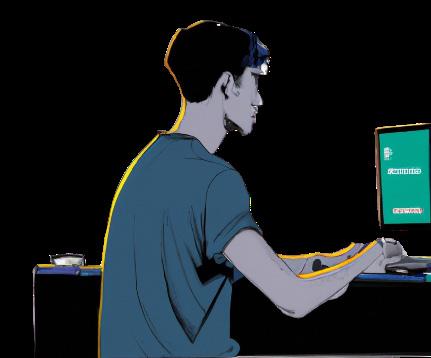
According to a poll conducted on the Chapbook Magazine’s Instagram story on April 21st, 55% of 71 Chapman student responses stated that they have already used the application.
Junior Isabel Torres has
By Gil Bothwellalready had a class using Chat GPT in a writing assignment prompt.
Her English professor, Samantha Dressel, gave students the option of using Chat GPT to produce a basic essay which she then expected to be revised by the student before submission.
Dressel said she plans on integrating AI into more assignments to promote the ethical uses of artificial intelligence and challenge her students to think about the role of human thought in the field.
Cole Cooper, a junior business administration and political science double major, has used it in a number of different ways to help him in his classes.

Cooper said he uses Chat GPT to help with his take home assignments and quizzes that are open-note and internet.
“I always put the questions in Chat GPT before I submit to ensure I get the points,” said Cooper.
He also used it to help analyze concepts he is studying to help with written assignments and essays.
“It leads me in the right direction I need to go,” he said.
Chapman digital journalism professor Paul Danison has quickly discovered the positive role Chat GPT can play for his students and in the journalism world. However, he also understands the many possibilities of negative uses.
“My first thought was wow this is exciting and amazing. My next thought was this is very scary,” he said.
When it comes to Chat GPT’s purpose, Danison made it clear that he sees it as a tool and that it shouldn’t be used to write stories and essays.
He listed some ways he believed it could supplement students including in research, generating ideas, editing, summarizing long reports, and even helping writing style.
“Some of the uses are boundless but I think organizations are going to have to create some ethical boundaries around it,” he said.
And as one could imagine, this powerful AI technology doesn’t come without its
implications. As internet technology continues to grow, professors have had to work increasingly hard to prevent cheating as students are presented with new ways to dishonor academic integrity.
And Chat GPT may very well be their toughest opponent yet, although some seem to think otherwise.
Chapman President Daniele Struppa weighed in on Chat-GPT’s use in Chapman education. He stated that it will be left up to individual professors to decide its place in the classroom.
“I believe that if a question can be given a good answer by Chat GPT, then the question is fundamentally trivial and requires little introspection,” stated Struppa. “To me the challenge is on the teachers to seek the kind of questions that cannot be answered by an AI system.”
Chapman English professor Richard Ruppel agreed with Struppa’s opinion on the trivialness of some of the AI’s responses. He
himself tried out the Chatbot with writing prompts he gave to his students and wasn’t completely sold “The responses were comprehensive but very superficial,” Ruppel said. “If we give assignments that can be satisfied using Chat GPT, we are not doing a very good job.”
Ruppel added that he believes there is going to be more concern about cheating from K-12 due to the sophistication of its responses more than at the college level. At least until the model improves.
The big question that has arisen surrounding the Chat GPT discussion: What happens when artificial intelligence inevitably does improve?
Those answers may be coming sooner rather than later.
The newest version of the software, Chat GPT4, was announced on March 13. However, it only improves on the existing chatbot and specifically advances in visual input, creativity, and adding larger context. GPT-4 can now process up to 25,000 words of text from the user. According to Open AI, GPT-4 produces 40% more factual responses in its own internal testing.
Daus Carmichael, a 2022 Chapman computer
science graduate, explained how big the new update really is.
“It is actually scary. Chat 4 is significantly more accurate and advanced than its prior versions,” he said.

GPT-4 has drawn the attention and skepticism of many. So much so that a petition was created on March 22 calling on all AI labs to immediately pause the training of AI systems more powerful than GPT-4 for at least 6 months. This wouldn’t call for the ban of the current Chat GPT being used by students like Cooper, but rather stop advancing AI any further until more time can be spent looking into the ethics of more advanced artificial intelligence.
The petition has already been signed by more than 27,000 people and counting, including the likes of countless professionals and experts in AI and similar fields.
Some key signatures link: Emad Mostaque, CEO of Stability AI, Apple co-founder Steve Wozniak, Elon Musk, and professors from Berkeley, MIT, Cambridge, Carnegie Mellon, Oxford, and Princeton just to name a few.
does?
All eyes are on artificial intelligence as it continues to be integrated more and more into everyday life. Many questions regarding the growth of AI and its implications are still left unanswered while fears of the technology becoming too advanced and being used for ill intent loom overhead.


The week starts out rough for sophomore Moira Wu as she stands outside her introductory creative writing class.
She’s tired. Proper sleep is days away, and the only thing in her stomach is half a peanut butter cup and watered down dark roast from the Library Rotunda. Then, the voice of a professor echoes in her mind:
“Think of what you’re paying to be here.”
She goes to class.
Chapman’s tuition is on the rise, and the ceiling just keeps getting further away.
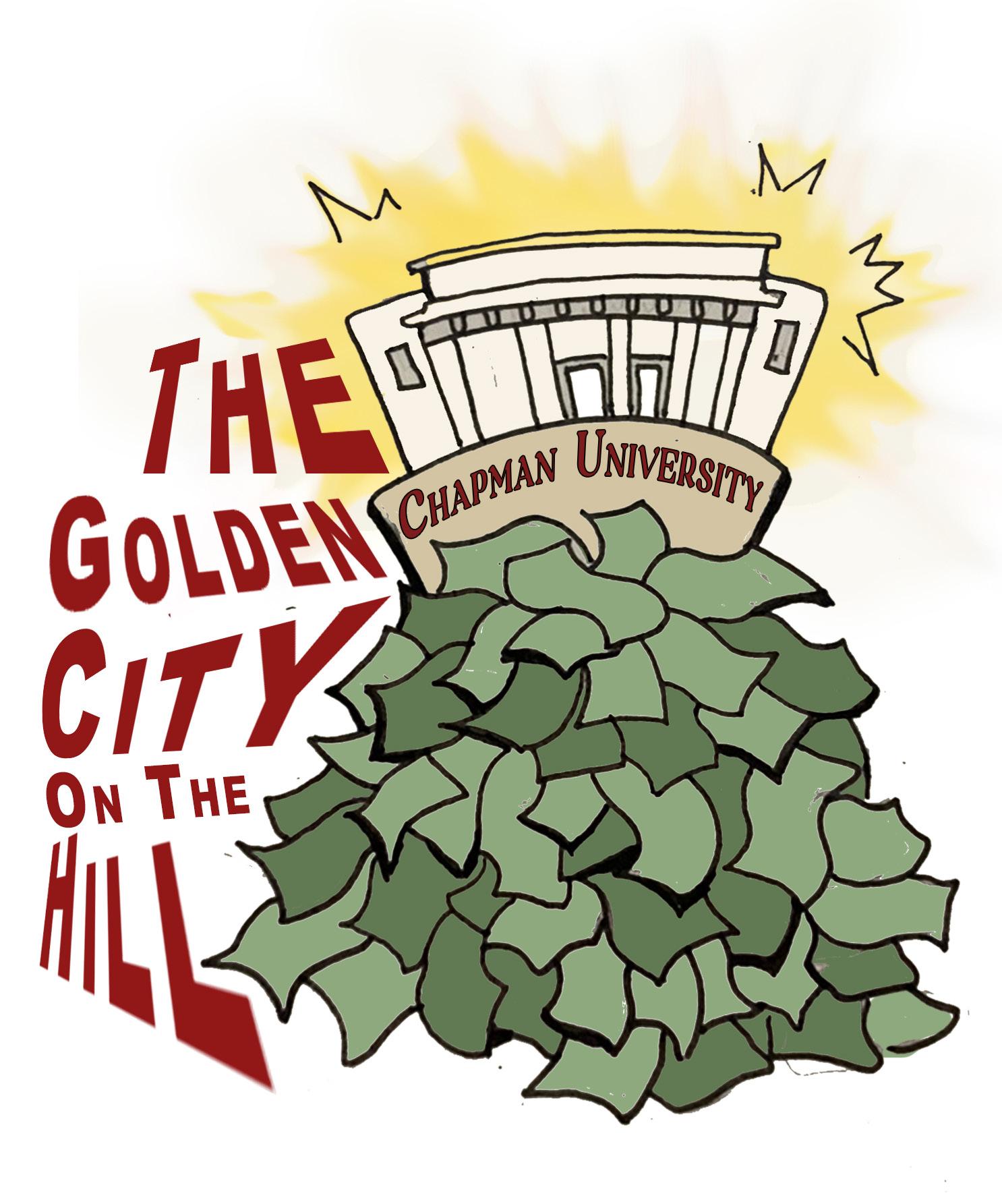
Over the past ten years, Chapman’s tuition rate has seen an annual increase of more than 40%, boosting undergraduate tuition fees from $43,573 (2013) to $60,672 (2023) according to College Tuition
Compare’s 2023 report.
That’s two and a half times faster than the statewide average tuition increase rate of 16.73% for all four-year schools.
And that’s not including climbing living costs as well as books and supplies, which contribute to total cost of attendance. Today, the price of living on-campus as an undergraduate is nearly $83,000 a year - placing Chapman in the Top 5 on Forbes’ list of the most expensive schools in California.
Congrats Panthers!
For students facing the financial strain however, like international student Moira Wu, placing 5th is harder to stomach.

“You’re definitely paying for the experience… and it’s difficult to know whether that’s worth it or not,” says Wu.
Wu, a student from the U.K., came to Chapman on a merit scholarship. International students face a cap at 15k on the amount of merit aid they can receive. Additionally, they face the challenge of being ineligible for federal student aid, according to studentaid.gov.
University President Daniele Struppa attributes the increase to Chapman’s constantly improving facilities.
In the last seven years, Chapman has opened the Keck Center for Science and Engineering ($130M), the Swenson Engineering Hall ($40M), a new Tennis facility, three new residence halls (roughly $350M total), and the Sandi Simon Center for Dance (roughly $20M).
“Unlike public institutions, nobody is paying for those facilities except us, so this is certainly one of the main reasons for our tuition,” Struppa said.
A multitude of other costs including staff raises, new programs like the Fowler School of Engineering, and the
refurbishing of Chapman’s technological classrooms - all of which require substantial
“All of this is very expensive, and is designed our students,” he said.
He cites the university’s continuously improving evidence of Chapman’s merit.
technological infrastructure with new smart substantial funds. designed to improve the experience for improving national rankings as
The price of knowledge is steep. But how high is too high?
For some, the cost bears more weight than for others.
“No one I know back home - despite them being mostly middle class - would ever realistically be able to afford this, nor want to, because it's astronomically more expensive,” said Wu.
For home students, English universities are able to charge up to a maximum of £9,250 per year for an undergraduate degree. When compared with U.S prices, the discrepancy in accessible education is a no brainer:
“It’s unsurprising that Chapman is a wealth bubble,” says Wu.
The wealth bubble she describes is evident. A 2017 study by the New York Times revealed that 64% of Chapman students come from families whose incomes are in the top 20%. This number has steadily increased over the last decade with the rise of tuition fees, while the percentage of students in the bottom 60% has been on the decline.
These trends reveal a growing wealth gap between students at Chapman - a gap that is felt by its students.

But Chapman is merely a reflection of nation-wide problems.
Private university tuition today is roughly three times as expensive as it was in 1974 while average public tuition has risen by nearly four times, according to New York Times writer and founder of NPR’s Planet Money, Adam Davidson. Davidson calls this “a painful bill for all but the very richest.”
So what is the solution for school’s hoping to alleviate the financial burden? One band-aid is financial aid.

According to Struppa, Chapman has made efforts to accommodate their increased tuition by increasing the amount of financial aid made available to their students. 82% of students at Chapman receive at least some form of financial aid.
Even so, the cap on federal need-based aid students are able to receive remains the same.
This means that for the average American household that doesn’t receive a lot of financial aid, higher education is simply out of reach.
Even as an international student, Wu keeps this in the back of her mind as she steps into her creative writing class.
She also points out a wide variety and seminars - which offer incomparable students - as a benefit of Chapman
“The ideal situation would be keeping terms of how they structure classes offer, but keeping costs lower - maybe
“Accessibility of education is definitely taken for granted… I am only here because of very specific circumstances.”
variety of classes, course material, incomparable opportunities to Chapman and schools like it. keeping the American system in classes and subject matters they maybe that means sacrificing
like school events or all the exaggerated facilities,” says Wu.
Like Wu, Struppa stands by the “Chapman Experience” in the quality of its facilities, the attentiveness of professors, and the merits of the education received.
“This year we received a record of 16,000+ applications; this shows that my view is shared by many other parents and students, who want to come to Chapman,” said Struppa.
In other news, after a two-year closure due to Covid, Chapman’s revered Doti-Struppa climbing wall reopened this past October.
Having undergone exciting renovations and new improvements, the impressive 50 foot rock wall is now open to all students from 8 a.m. to 10 p.m. on weekdays.
The mere price?

None!
It’s the cherry on top of an $83,000 yearly panther tuition.

Stuck at home during the COVID-19 pandemic, senior MaryKate Willis couldn’t think of a more perfect thing to do: get high.
“It’s like the introvert’s sport of choice,” she said.

The pandemic encouraged a new generation of stoners, and Chapman students pose no exception.
Recreational marijuana usage is higher than ever among young people. In 2019, 25% of college students reported using it in the past year. And after the pandemic, numbers skyrocketed. According to the latest research from Monitoring the Future, in a trend that coincided with the pandemic, cannabis use among college students in 2020 reached levels not seen since the 1980s
Recreational use of marijuana became legal in California in 2016 for those 21 years and older. The California Department of Public Health referred to its website, stating that young adults between 21-24 years old have the highest rates of marijuana use in California.
“It was the perfect thing to do. What else could you do? You were home all the time,” Willis said.
Today, Willis recognizes that she was smoking to disassociate from her emotions during the pandemic. It numbed difficult feelings.
“During quarantine, even with school, I was like I’m just gonna sleep through this and get baked all day. It ended up creating this really nasty association,” Willis said.

The California Department of Cannabis Control notes that the brain doesn’t fully develop until the mid-20s. Using cannabis regularly from a young age can lead to physical changes in the brain’s reward centers, which can last into adulthood and impact mental health.
Willis first smoked weed when she was 15-years-old. After recently taking a break from smoking marijuana, she now prefers to use it in moderation as a meditative tool.
Senior, Mary-Kate Willis, who also has her own YouTube channel and podcast, where she sometimes smokes on-camera and gives advice. Photo courtesy of Mary-Kate Willis“I just took a T-break, which is a tolerance break, so I tried to cut back, now I’m at like 10 bowls in a bong a day,” says Willis.
The State Department of Public Health website notes that over 17% of California adults aged 18 and over reported using marijuana in the past 30 days, which is higher than the percentage of adults who use marijuana in America as a whole, which is about 10%.
Willis admits that her smoking habits have had a strong financial impact on her, and now it’s something that she budgets for.
“Back home you would make friends and go to parties just to meet ‘a weed guy.’ It’s really cool, because I feel like I made a lot of friends through it in a weird way, but at the same time it was definitely a little bit more intimidating doing it back then,” Willis said.
From the occasional social user to the ones who selfmedicate, weed plays a varied role in the lives of Chapman students.
In fall 2022, almost 12% of college students in the United States who had used marijuana had used it daily or almost daily in the past three months of a Statista survey. In 2022, while alcohol was the most widely used substance amongst U.S. college students, cannabis was a close second.
After junior Terese Klopf finishes her three hour long lectures on entertainment law and is done with classes for the week, she likes to head into her garage to roll a joint - time to relax.
Klopf only smokes once or twice a week, mostly when she’s feeling social. She first got high the first semester she was on campus, in the spring of 2021.
“It’s like a pretty agreeable thing to do with friends while hanging out and such. Sometimes I’ll use it to try
 Junior, Terese Klopf, smokes a pipe. Photo courtesy of Terese Klopf
Junior, Terese Klopf, smokes a pipe. Photo courtesy of Terese Klopf
“I greened out and threw up on my carpet”
- Chloe Bell
and spark some creativity if I feel stuck on a project or paper,” she said.
Other students, like junior Chloe Bell, stopped smoking weed abruptly after being a regular user for over a year.
“On the last day of halloweekend, I smoked too much weed, greened out, and threw up on my carpet. Now I can’t smoke weed without getting nauseous,” she said.
Greening out, which a THC overdose, is a common experience, especially among new cannabis users. Effects of this can be dizziness, nausea, rapid heartbeat, chest pain, and more.
While some students have reigned in their usage, others are still regular cannabis smokers.
For a group of Chapman film students, April 20 means it’s time to get impossibly stoned. Starting at sunrise they set a main goal: to stay high all day. After hitting up a dispensary in Santa Ana, they gather for a backyard garden party, complete with homemade pastries and strawberry-banana joints.
Some students use it to relax after a long day, others rely on it for sleep.
“I smoke every night before bed. I can’t really sleep
without it,” confided one junior, who preferred to remain anonymous.
A study from Science Direct states that a majority of maijuana users rely on the drug for better sleep. The CDC notes that some develop marijuana use disorder, meaning, “they are unable to stop using marijuana even though it’s causing health and social problems in their lives.”
While it can be dangerous to rely on the drug for psychological or emotional relief, it’s up to students to regulate how they use the drug.
Cannabis is not only more accessible — with 37 states having medical marijuana legalized and 18 states that allow recreational usages — but the drug has been de-stigmatized over the years. Willis said coming from Connecticut, a state that legalized marijuana only within the past two years, she had a culture shock moving to California where weed is so easily accessible.

But Willis recognizes it can become a problem for students.
“I think weed can become habitually addictive. You search for it in your daily routine, and then your life revolves around it,” Willis said.
 By Will Barron and Jack Sundblad
By Will Barron and Jack Sundblad
Karthik Davuluri thought he was ready for his freshman year at Chapman. He had all of the essentials: a phone, laptop, meal plan and a cramped dorm room to call his own.
What he didn’t expect was that the key to the college experience he had dreamed of was actually a set of car keys.
Now a sophomore, the film studies major reflects on how things have improved since he got his own set of wheels.
“Last year I felt tied to campus and the Circle; now I don’t have to rely on others,” he said.
Route 54 Orange County Bus crossing train tracks along Chapman Ave. in Orange, Calif. Photo by Will BarronChapman has a transit problem. Sandwiched between two freeways, the necessities for student life, such as grocery stores, pharmacies and doctor’s offices, can’t be found in Old Towne Orange, and can feel unreachable without a car.
From shuttles to Safe Ride, the University offers some transportation solutions, but they’re limited.
Many students living in Chapman housing use the shuttle daily for a ride to class.

“We implemented a shuttle service to bring students to and from campus as a commitment to lessen the impact on local traffic during peak times of congestion,” said Sheryl Boyd, assistant director of parking and transportation services.
According to Ricardo Gonzalez, chief of public safety, the school monitors the shuttle system to the number of students who need it.
“If we see an increase in demand, we will increase our services,” he said.
Gonzalez also said that Safe Ride, a service which allows students to schedule rides within a limited radius around campus in the evenings, is also popular.
But there’s an issue. The specified radius’ borders do not officially reach Grand, Panther Village, or other places students may want to go, and it isn’t operational during the day.
Students responses to how they get around Orange Data from fizz poll of 662 students

Sophomore Ikwo Wilson is one of many students stuck without wheels. She relies on the Chapman shuttle to get to campus.
Wilson suggested that Safe Ride could increase its scope in terms of distance and operating time.
“Just so students can grocery shop or get somewhere during day time too,” said the global communications and psychology double major.
When Davuluri had COVID-19, he got Safe Ride to pick him up from the hospital.
“No one really wanted to pick up someone with COVID, but the nurse asked if I was a Chapman student and when I said I was they called Psafe for me,” he said.
Outside of exigent situations, Chapman’s
Graphic showing how long it will take Chapman Students to get to the nearest grocery stores in Orange, Calif. Information sourced from Google Maps. Artwork by Jack Sundblad

transportation systems are largely limited since they’re focused on trips between home and class.
Senior Jeffrey Weber remembered freshman year was simpler- he rarely left campus for food with a cafeteria meal plan. He rode his bike to class and to The Circle. When he had to go further, he’d ask a friend to drive.
But since then, Weber said having a car was necessary for him.
As a sophomore, he drove his car down from Seattle so that he could commute to campus, grab groceries, or hang out with friends that no longer lived a dorm away.
“Life expanded and I had more stuff outside of Orange, so it would’ve been really hard not to have a car,” Weber said.
After the convenience of being a freshman, it’s difficult to adjust to living in Orange without having a ride. But there are still ways to get around.
When Wilson has to run errands, she uses Zipcar, a short term car rental service.
“I get to get a taste of what it’s like to have a car,” Wilson said.
Libby Caldara, senior strategic and corporate communication major, said that having a car all four years was helpful.
“The easiest way to get from place-to-place is by car,” Caldara said.
Caldara said another benefit to having a car during college was that she could ensure she was safe.
“It was nice in terms of safety for girls to have access to transportation in the evenings,” she said.
When asked about limitations of the Chapman transportation system for students without cars, Boyd pointed to the ride share programs OCTA and Metrolink.
These passes provide discounts to existing public transit infrastructure in Orange County.
Wilson uses this. But she said OCTA buses take much longer than she is sometimes okay with.
Students can also catch a bus from the circle to any of the beaches in Orange County.
Similarly, Metrolink, a train service with a station beside the K Residence Hall, reaches the edge of Orange County and beyond. Trains run daily to all Los Angeles museums, also going to San Clemente and as far as Ventura County.
With all of these options, Chapman students can find a way to get around that suits their needs, and doesn’t require owning their own vehicle, or going through the university.
And for those that are interested in using the school’s transportation systems, Boyd reminds them “It’s available to any Chapman Student with a valid ID Card.”
“I take the OC bus when I go to and from work or an Uber when I don’t want to sit on the bus for an hour and a half for what is a 20 minute drive,” Wilson said.
But if you’re on a budget, OCTA routes can get you as far as an Uber, and for as low as $2.00.
Map of Orange, highlighted in blue is the area that someone can drive in 30 minutes or less and in pink is the same but by taking public transit. Artwork by Jack Sundblad, Information from traveltime.com
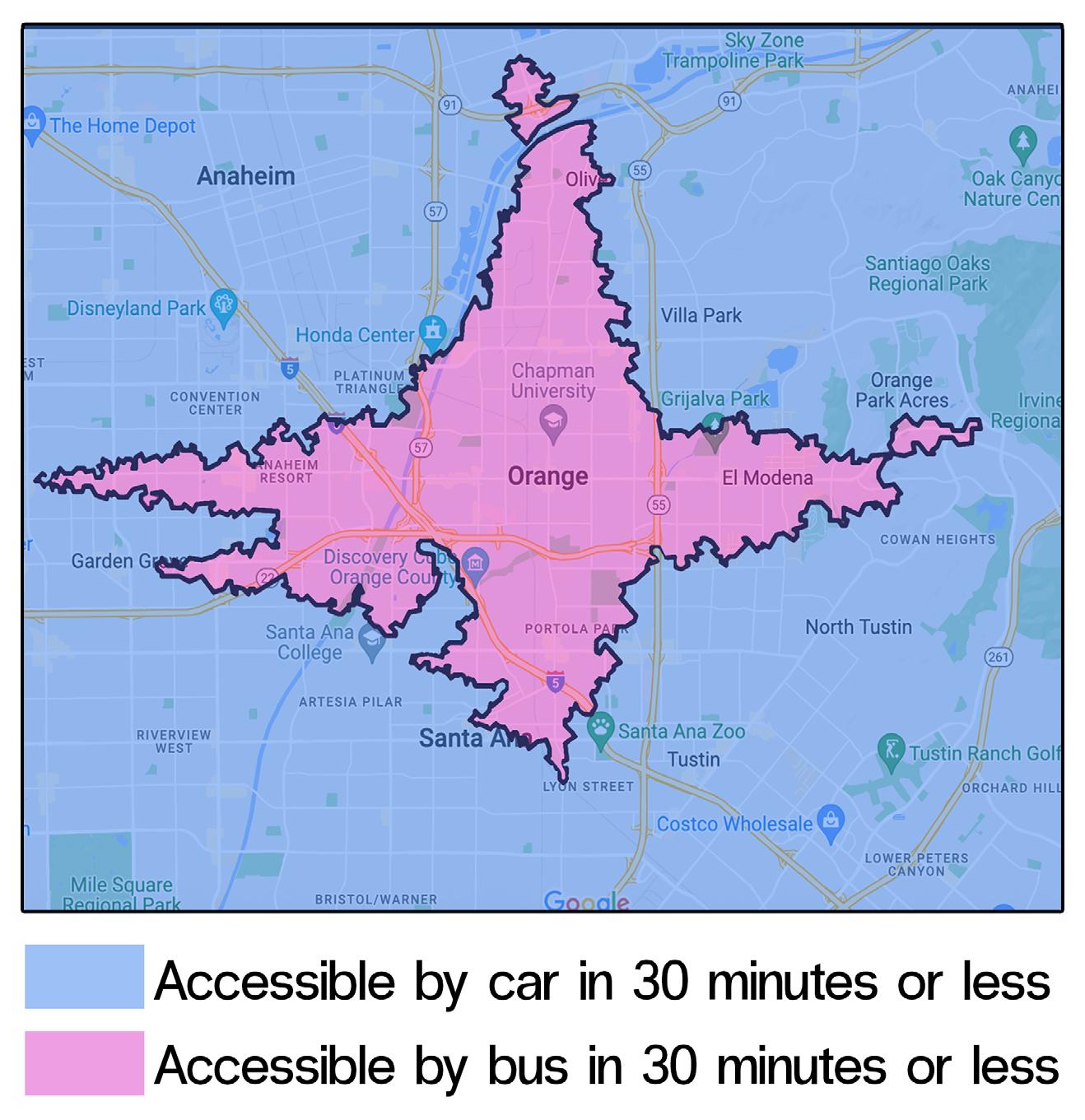
 (From
(From
David Zhang loves being behind the camera. He’s spent four years at Chapman learning the art of cinematography. Now it’s time for the piece de resistance, his senior thesis.
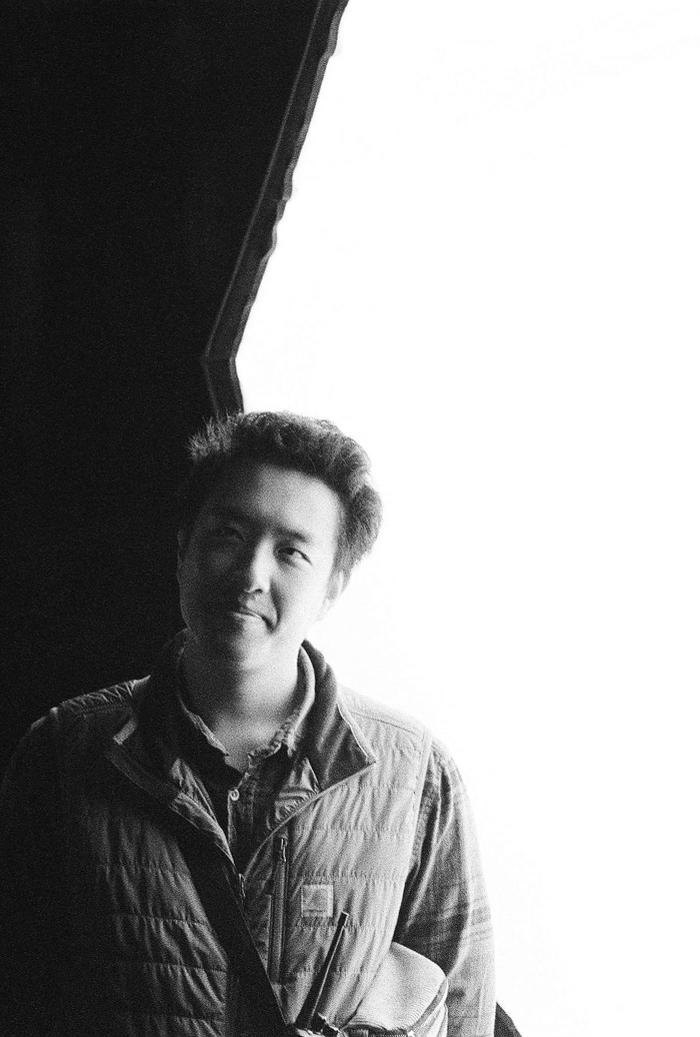
But there’s the rub. The school-provided equipment he had relied on for all his previous endeavors was no longer available. Like many others, he’s in a bind. Unless he takes a whack from his own wallet.
Dodge College has seen some significant cuts in the film production budgets. In years past, thesis students were given their pick of the litter when it came to camera, lighting, and grip equipment. But now, add budget cuts to the new limitation on rentals, seniors are forced to dig into their own pockets in order to complete their culminating films.
They have become so concerned that last November Zhang wrote a petition — signed by 27 film peers — asking the Dodge College Thesis Committee to do something about it.
“We need the basic and necessary tools to express our creativity and visually tell a story,” Zhang stated in the petition.
The petition presented three main issues: a lack of funding for thesis grip equipment, a disparity in treatment of undergraduate versus graduate students, and the need for camera dollies that are no longer provided.
Grip equipment, which includes lights, chords, multiple kinds of stands, and a number of flags and light shaping tools, is an essential component of the filming process, helping to set the scene, paint the picture, tell the story.
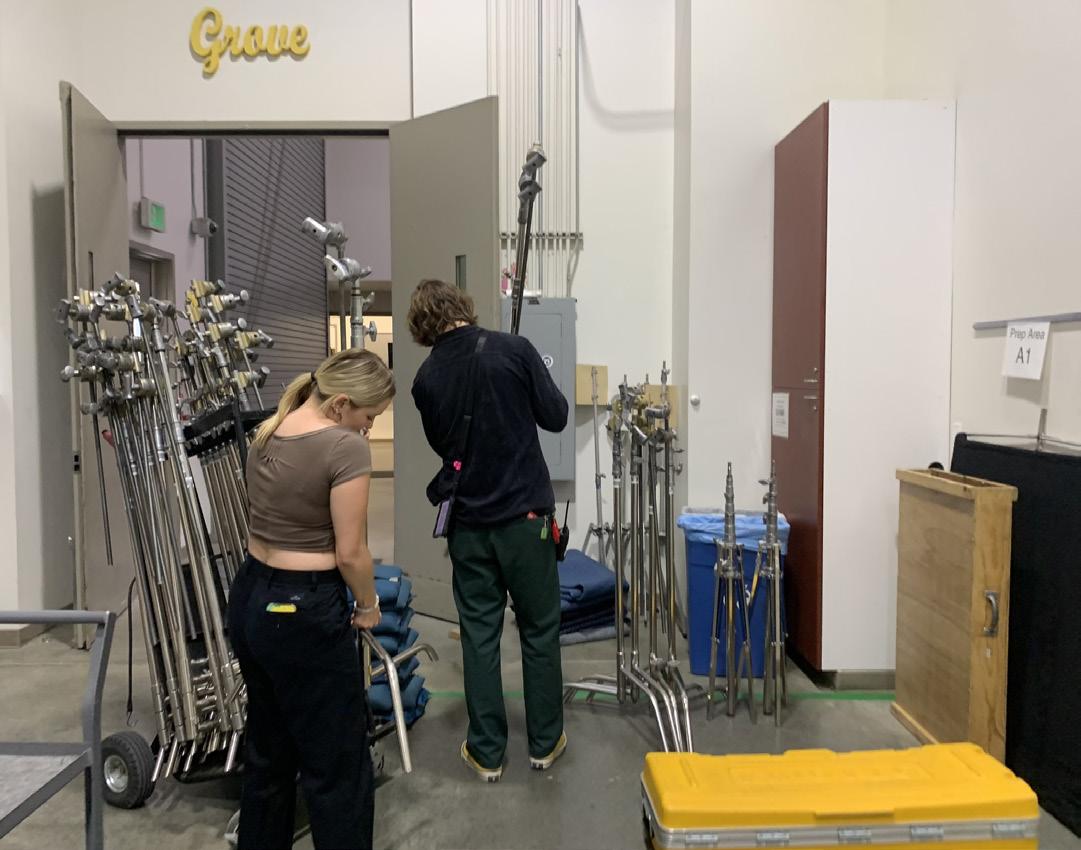

Equipment such as this was normally available for seniors to rent from the Goldroom, a student-run rental house nestled in the back of Marion Knotts Studios. But now, due to the recent changes, seniors must source this equipment elsewhere.
In his petition, Zhang outlines the average cost for a bundle such as this one from any average rental house. The cost? Roughly $2,700 for one weekend.
But members of the Thesis Committee view this change as an opportunity, rather than a hindrance.
“It’s about giving students confidence when they get to the real world,” said Production Chair and Creative Producing Professor, Ed Lavelle. “When they’re given a budget of nothing from a production company, they know they can do it.”
While this change may seem well intentioned, Chapman seniors still find the $1,500 grip and electric budget too tight.
“It forces us to find the cheapest rental houses that don’t have the best equipment,” said junior cinematography student and Goldroom student employee Zohar Varadi. “And it potentially deters some rental houses from working with us because of our strict budget.”
The discrepancies in budget between undergraduate and graduate students has proved further strain on morale. Students like Zhang, feel it’s unfair that graduate students have a $5,000 rental budget, over twice the size of their undergraduate counterparts.
But board members, like Lavelle, who expect to oversee nearly 50 senior thesis projects in the next year, feel differently about decrease in funding.
(From left) Goldroom student employees Ryan Cartee and Zohar Varadi set up a typical General and Electric order. This equipment is now only available to Junior Film Production students. Photo by Isabella Ocañas“There’s only so much money to go around,” said Lavelle. “The graduate program is much smaller, a third of our undergraduate projects.”
One big problem is the Goldroom. The name is synonymous with all the great gadgetry and equipment needed for good filmmaking. Items range from high-end cameras and lenses to tripods and sound equipment. In shortit’s Dodge’s mothership for film equipment.
The most sought after equipment, however, is the Fisher Dolly.
For those that aren’t familiar, a Fisher Dolly is the best you can get when it comes to camera dollies. The dolly, valued at nearly $100,000, is only available for rent, even from the company J.L. Fisher itself.

“But that’s the unfortunate reality of academia,” said Goldroom manager Jenny Pershon. “There’s plenty of money but it’s not making its way around.”
So what is the solution? Where it stands now, no one really knows.

Incoming seniors, like Varadi, worry about how they’ll navigate the next year.
“We spend all this year learning the equipment,” said Varadi. “But there’s really no point if we don’t get to use it our senior year.”
The Dodge Thesis Committee has no concrete plans to change these new regulations, but board members like Lavelle hold out hope that students will continue to learn and grow despite the budget challenges set in place.
“We want to set everyone up for success,” said Lavelle,.“There’s only so much we can do.”
The Fisher Dolly is the most sought after equipment from the Goldroom, but is extremely limited in its availability. Photo by Isabella Ocañas
“It’s the gem that everyone wants,” said Zhang.
But when it comes to the Goldroom, there are only five available, forcing seniors to dig into their already tight grip budget, and their own pockets, if they want to work with this equipment.
JP Olalia hoped to find a place to study and be with his friends in Argyros Forum. But to his disappointment, every spot was taken-from Qdoba to the front door, not a single open seat.
“There are so many times that I can’t even find a place to sit down,” Olalia said.
So when isn’t Chapman University’s campus packed full? From car parking to the gyms to filled classrooms, to just space for students, it’s a busy campus.
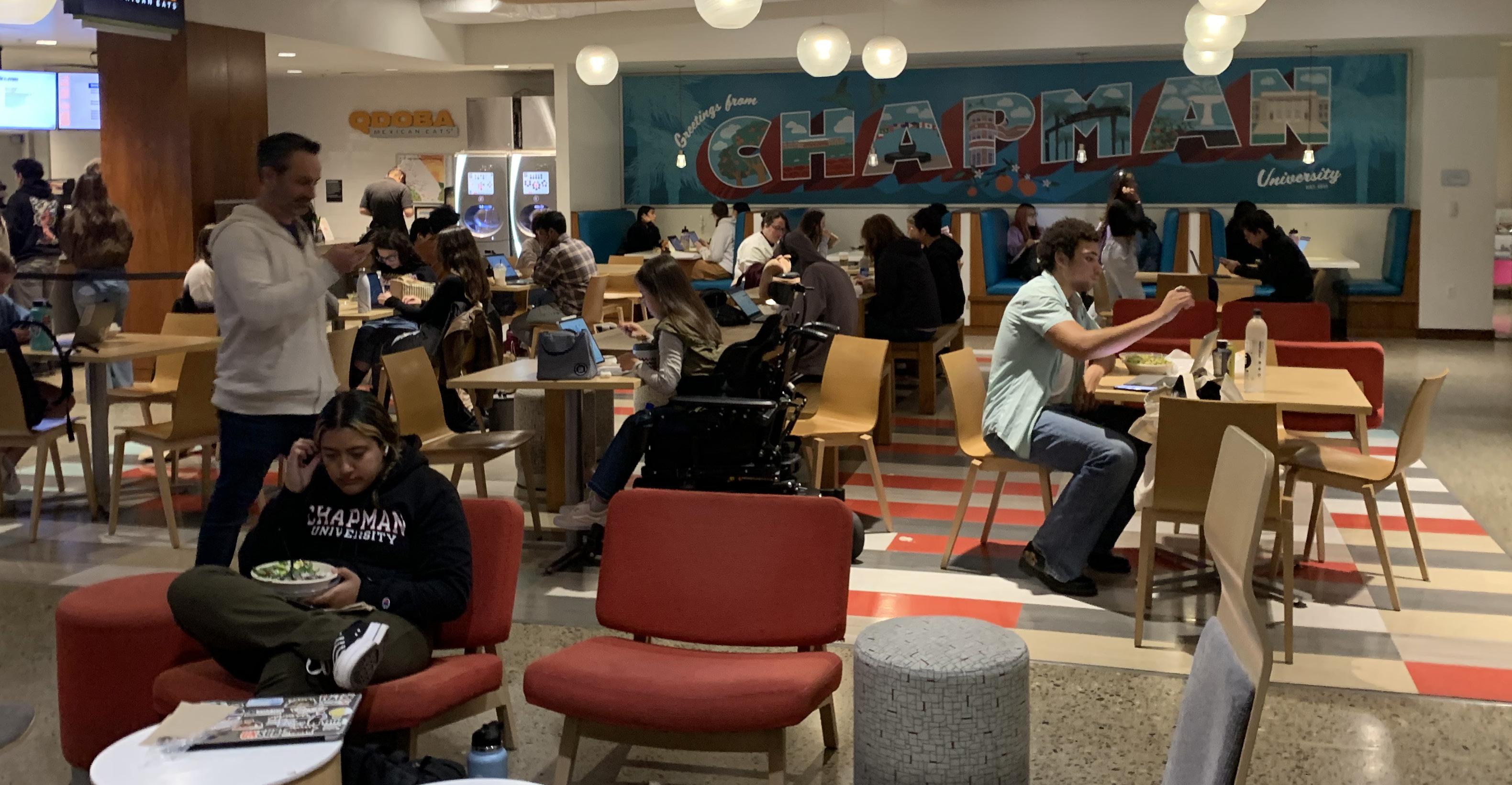
Chapman has been suffering from success lately- so many students and a small campus leads some to ask if Chapman needs to
expand. But surrounded by the bustling city of Orange, expand where?
A mix of city politics, zoning inconveniences and historical restrictions — and Chapman’s own finances — put the campus in a metaphorical chokehold.
The university has a mix of fixes for the problem. But the largest partial answer is a concept it calls “infilling,” according to Chapman’s Executive Vice President and Chief Operating Officer, Harold Hewitt.
Infilling is the concept of making new space in areas the school already owns. This would
mean places next to buildings, unused lots, or buildings that have not yet been fully developed. This is the university’s alternative to creating a whole new plot of land. That would cost a lot more money and finding available space, according to Hewitt.
But infilling could give it up to a million new square feet of space for the student body and administrative offices.

“We have the capacity to grow there. We have several buildings sitting around that we can use to expand that way,” he said.
But future plans don’t do much for today’s students.
Housing issues and gym congestion are two of the major problems students are facing. With the growing acceptance rate and biggest class of freshman the school has seen, housing is in short supply. And at the gym, students outnumber available equipment.
President Daniele Struppa has another approach to keep the campus free and full of space: restricting the growth of the student body.
“I have made the decision to limit the amount of students that we will have on our campus. In other words, while Chapman has been growing for the last 20+ years, it has come to a moment when we need to stop the growth,” he said.
After years in the 7,000-plus students range, this year Chapman grew to more than 10,000 students for the first time.
Specifically, Struppa wants to set a limit of 10,500 students at the Orange campus, and 1,500 for the Rinker campus. He believes this will not only help the school better handle with its space issue, but also because he wants to keep the thing that keeps Chapman what it is:
“If we were to grow beyond those numbers, we would eventually become like any other university, in which the president is an invisible and unreachable presence, the provost is hidden behind a wall of staff, and professors are very hard to connect with. This is not the Chapman I envision,” he said.
Health science major Kate Sheafor said that overcrowdedness shows itself through classes, specifically those in large majors and programs.
Argyros Forum (left) packed out during lunch hour. Chapman University’s main garage at 11 a.m. (right), packed full with cars while students go to class. Photos by Brian Guevara“There’s high demand for a lot of classes, but there’s usually only one or two sections offered, so it’s hard to get everyone that needs it in. There needs to be more offered to students,” she said.
Struppa’s plan to keep the amount of students low is key to freeing up spots in large classes, like the ones in Sheafor’s program.
Classes are not the only thing that fill up too quickly. Housing suffers from the same thing.
Last year, Chapman offered students that lived in Chapman Grand and Panther Village money to live off-campus. Why? Because they needed to make more space for the recordhigh amount of freshmen they accepted into the school.
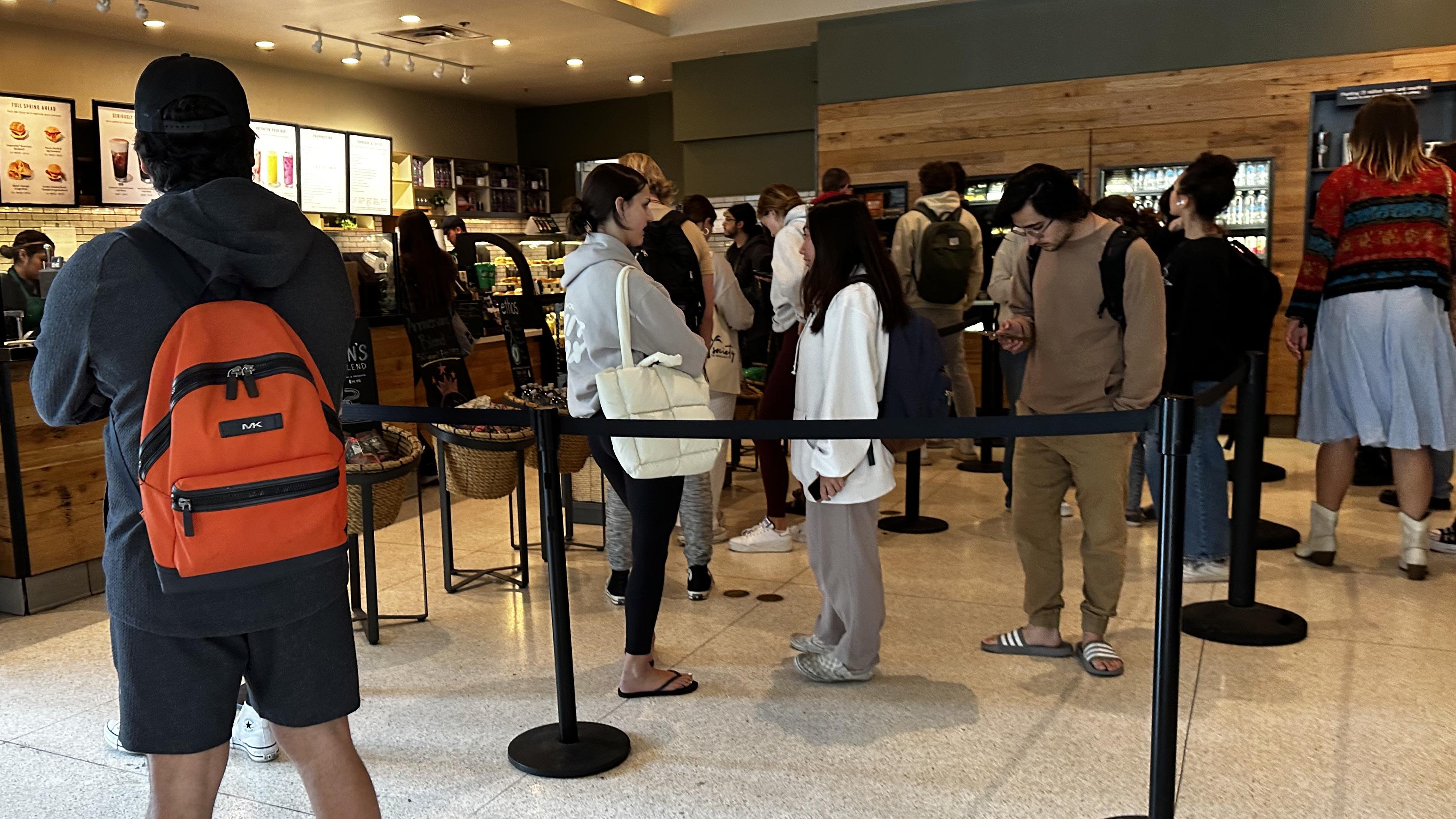
The growing student population has also led to a new new building, Chapman Court, which is set to open in the Fall 2024 semester. Hewitt explained that the new units and amenities will be a large help when it comes
to spacing out the school since students have a lot that they need there.
Student Government President Rachel Berns said the school needs to give more space to the students. In her leadership role she plans to push for such improvements.
“As decisions start to be made about what things are moving where and what’s going to be replacing them, we’re definitely going to make sure that we have a very strong voice in that conversation when it comes to advocating for students,” she said.
“I’m on the dance team, and it can be challenging because we don’t have access to the
Sandi Simon Dance Center. The only other space on campus that has mirrors is AF119B. If that room is booked for our practice time, then it’s really unfortunate being in a crowded room with no mirrors,” she said.
While authority sources suggest solutions that
will happen in the long term, many students wonder what will be done to mitigate the issues in the meantime.
In an email announcement, Chapman said Starbucks will be closing May 22 for renovation to expand services. This will increase the side of the area and add an external walk-up window to make the coffee shop more accessible.
Vice President of Campus Planning and Design, Collette Creppell, has been creating solutions while the larger projects are being completed. She said the campus is working to consolidate space and acquired houses that are zoned for academic and administrative uses.
“We consolidate uses that are actually using too much space, so that those that don’t have enough will get more. Also, we’ve acquired houses that are zoned for academic and administrative uses. “That creates places where we can move some of the smaller entities that will free up other space on the main campus,” she said.
With the campus slowly growing their usable square footage, and the student body being restricted to a slower pace of growth, the administration hopes to make this problem as little as possible.
As of right now, it is still unclear how quickly the school will create space for their all-time high number of students, so for now, students like Olalia will have to settle for an outdoor bench, or their own couch to do their work.
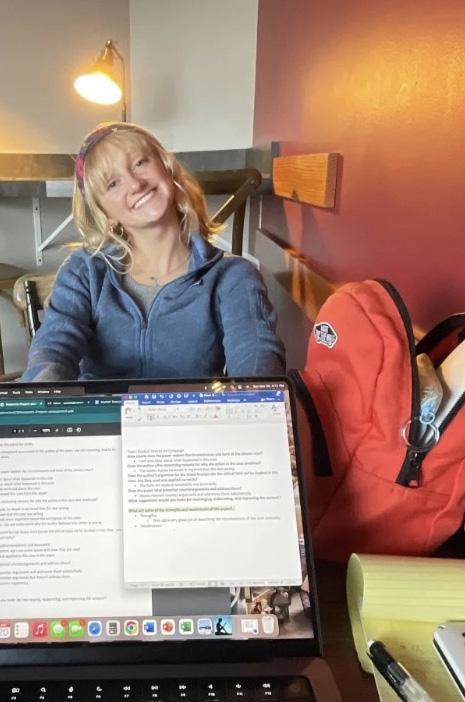
“It just feels weird knowing most of the solutions won’t even show while I’m still at Chapman,” Olalia said.
Harold Hewitt Executive Vice President and Chief Operating Officer
Kate Sheafor studying for her Health Science classes. Photo courtesy of Kate Sheafor
Executive Vice President and Chief Operating Officer
Kate Sheafor studying for her Health Science classes. Photo courtesy of Kate Sheafor
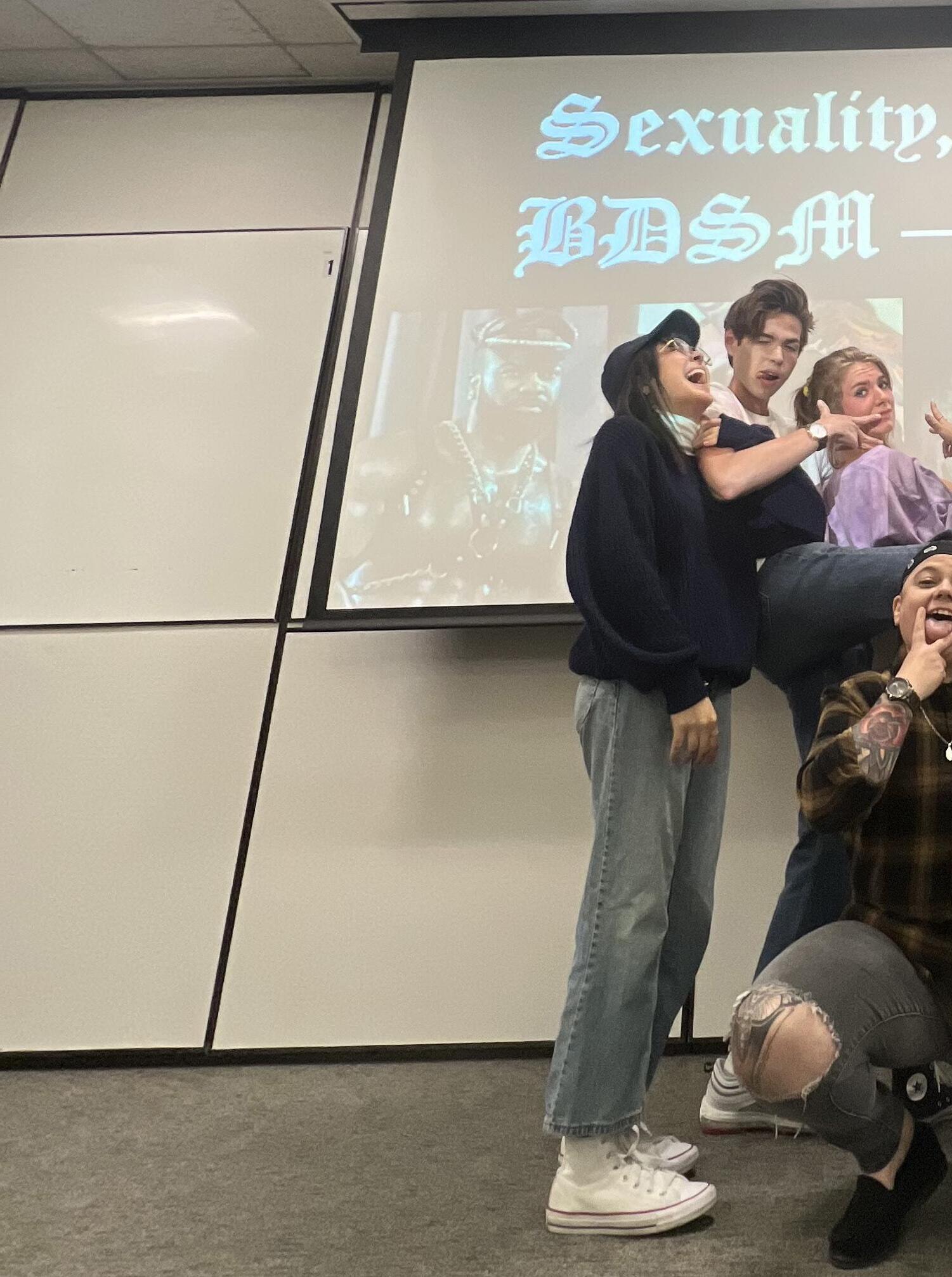
After falling in love with introduction to LGBTQ+ studies after just one class, Ashlyn Walters was expecting to grow more within the newfound passion she discovered.
“I had always seen myself as part of the community. I took the class and after the first day I declared the minor,” the freshman said.
But it’s not that easy. Students interested in LGBTQ+ studies are faced with budget cuts and lack of any full-time faculty for the subject.
In fact, Ian Barnard, director of the minor, is so upset about what he sees as Chapman’s lack of interest, he is stepping down from the role but continuing their position as a full-time English professor.
To be a minor within the LGBTQ+ program provided by WIlkinson College, students are offered humanities and sociology courses (as well as other overlapping courses) to complete this minor within their time here at Chapman.
However, Barnard had no choice but to cut the amount of classes offered next semester in half due to low funding.
“Funding is what allows us to have classes — I had scheduled three sections — four classes that were scheduled and two were cut,” Barnard said.
Chapman recognizes the problem. But solutions? No one is quite sure yet.
Wilkinson College Dean Jennifer Keene explained that prioritizing certain departments is an ongoing issue.
our opportunities,” said
“I would agree with Dr. Barnard that we are behind and there is more we can do. I think that Chapman is behind in a lot of areas and so in terms of filling out these initiatives, additional resources would be great, but we are very constrained with our budget,
Keene
Keene said that the reason why the number of classes offered is being reduced, despite higher interest, is due to the Provost’s office limiting the amount available. Money apparently is delegated to other programs that may seem to be more important.

The Provost’s office has yet to respond to this problem.
Keene also said that the number of students within a minor is what helps determine the funding and just how many classes will be offered.
But according to both Barnard and Sanchez, there is a waitlist for Humanities 205 (Intro to LGBTQ+ and gender studies) every semester.
Other important minors and departments such as ethnic studies, Asian American studies, Latinx studies, and Africana studies all received a full time faculty member within less than four years of being at Chapman.
Keene stated that the university has also added another full time faculty member in a separate department who will add to some courses that touch on LGBTQ+ studies.

Many students like Walters had planned their upcoming semesters with the hopes of executing the minor early on in their academic careers. But that is not possible when the program does not even have full time faculty specifically trained in LGBTQ+ on campus.
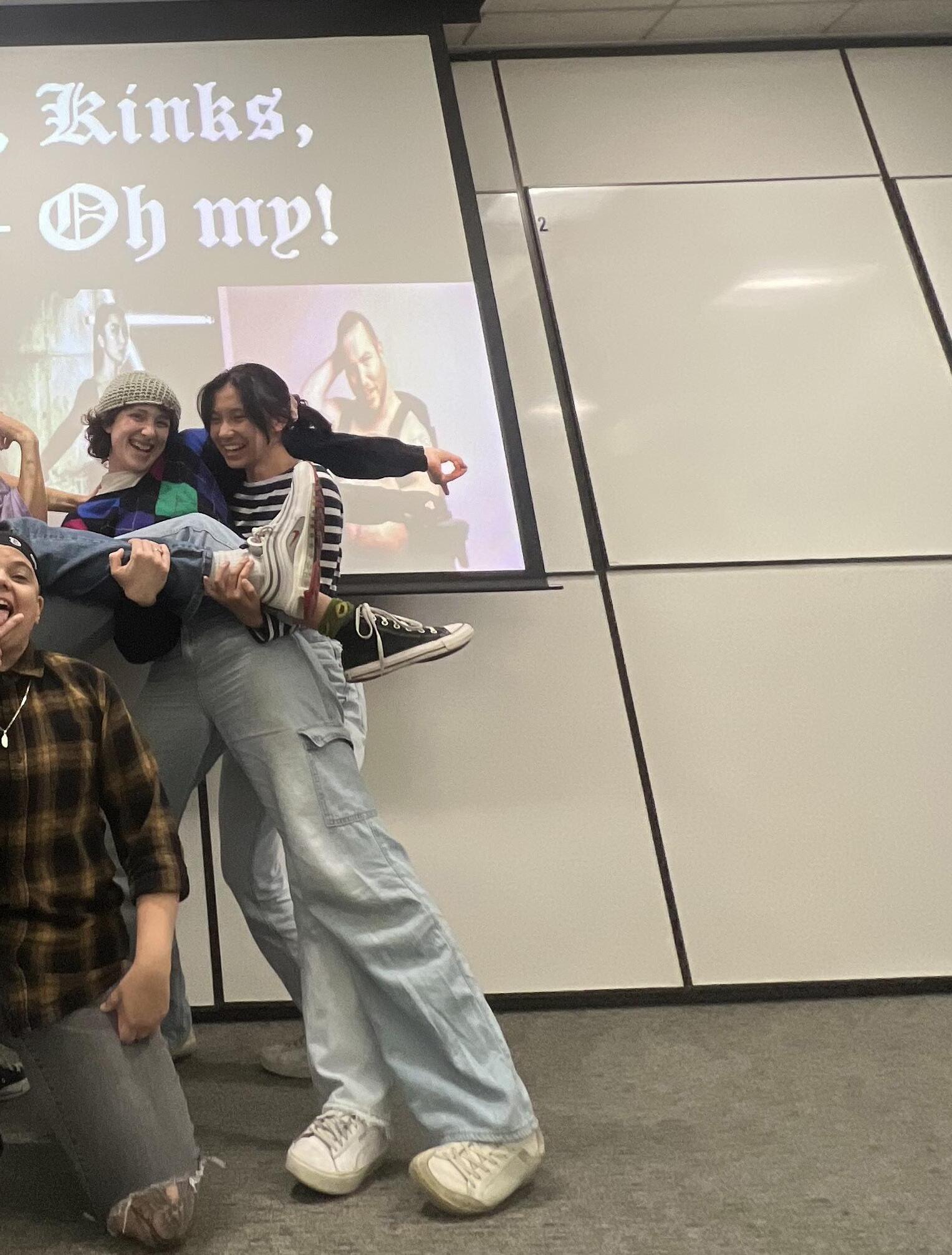 Students pose with Professor Liz Sanchez in Humanities 205. Photo courtesy of Jessica Kim
Wilkinson College Dean Jennifer Keene.
Photo courtesy of the Chapman website
Students pose with Professor Liz Sanchez in Humanities 205. Photo courtesy of Jessica Kim
Wilkinson College Dean Jennifer Keene.
Photo courtesy of the Chapman website
The school relies on adjunct professors who are only given two classes a semester, and therefore have to work multiple campuses to survive.
“We really need to have full-time faculty members teaching in this program,” said Barnard.
Adjunct Professor Liz Sanchez said that they are not given funding for research projects or to help students with their time here at Chapman.
They would love to see a department in the future for LGBTQ+ studies so students can have real mentorship on campus.
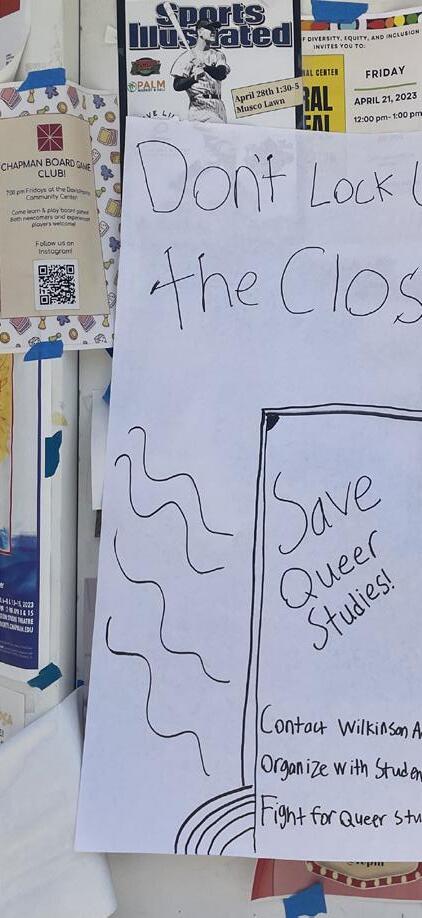
“I know there’s not a lot of faculty members that specialize in LGBTQ+. I am openly queer, and it’s hard because there’s no department. There’s no real mentorship and there’s always students who want to do more with LGBTQ+ studies,” said Sanchez.
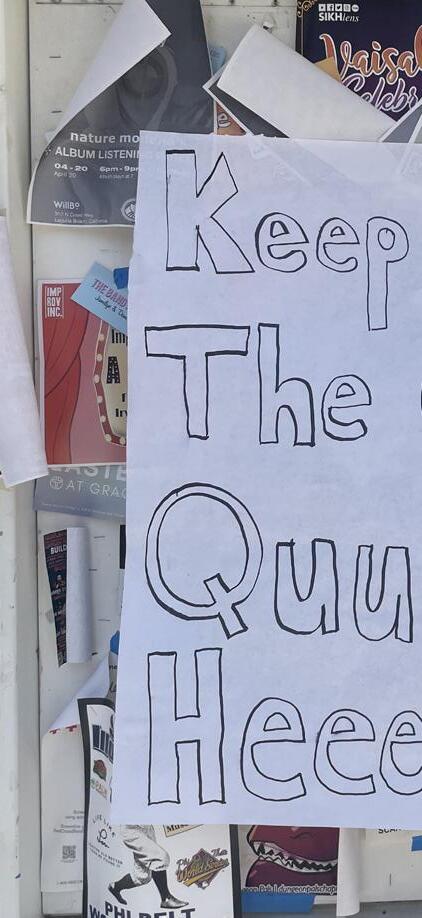

Students within the minor, such as Walters, are worried as the program seems to be slipping through the cracks of Chapman, with barely any recognition of this going on.
However, Walters discussed her distaste of the seemingly performative activism.
“It doesn’t feel very inclusive, it looks inclusive but it doesn’t feel that way as a student,” she said. “I feel like they only do it for looks, the whole ‘I am Chapman’ thing, it’s not doing anything to help.”
Dean Keene made sure to emphasize how there are still other opportunities to achieve the minor requirements in a timely way.
The minor requirements can be made up through other courses that intertwine with the LGBTQ+ program.
Sanchez highlighted the lack of support they receive from the school in total when helping run the program, being an important part as they teach most of the introduction classes.
I am Chapman seems to be the slogan when it comes to inclusivity at Chapman. When walking through the halls of the Argyros Forum, faces of students line the rooms with proud statements of who they are.
An LGBTQ+ flag is hung along the walls, in hopes of showing solidarity with the community.
They said they are, “barely keeping their heads above water,” as the program relies on three adjunct members and other faculty specialized in other topics.
Instead, Chapman hires a couple of adjuncts that are only allowed to teach two courses each semester. Without a budget to hire full-time faculty and run these classes, there is no obligation to bring these courses back.
Posters hung up around made by LGBTQ+But, according to Barnard, the real problem is money.
Adjunct professors end up being a money-saver for universities as adjuncts are only allowed to teach two classes a semester.
If they were to hire full-time faculty, the university would have to pay them and provide benefits.
“If there were full time faculty members they would have to teach a certain amount of courses to have multiple courses in the program,” Barnard said.
Sanchez stressed the importance of LGBTQ+ studies, and how the program doesn’t just benefit members of the community.
The program not only discusses important subjects such as sex health and reproductive rights, but basic needs students at Chapman should know about, such as sexual education and consent.
With talks of the program beintertwined with Gender Studies, Sanchez cannot help but fear the erasure of the overall department in Wilkinson.
“I’m terrified that the LGBTQ+ will be gone or absorbed by another minor,” they said.
Burnout has become another harsh factor in the fight to keep queer studies alive. Sanchez finds it hard to encourage queer students to act when their adjunct professors aren’t always here to back them up.



LGBTQ+ minor Sophie Bormann agreed and expressed her frustrations at the lack of students fighting to help the program evolve. She has lost hope in her fellow students, as well as the faculty in charge, since Chapman resides in such a conservative area.
“If [the school] were trying to grow [the minor] they would keep it in its own category,” she said.
While Bormann understands that understaffing can often be an issue at many universities, she feels Chapman needs to find a way to make it work.
around Chapman studies students. Skyler Doyle-Ortega“I feel like they’re not putting in the effort to actually get it going and get it started, even though people are clearly interested in it and enjoy it.”
- Sophie Bormann, LGBTQ+ minor

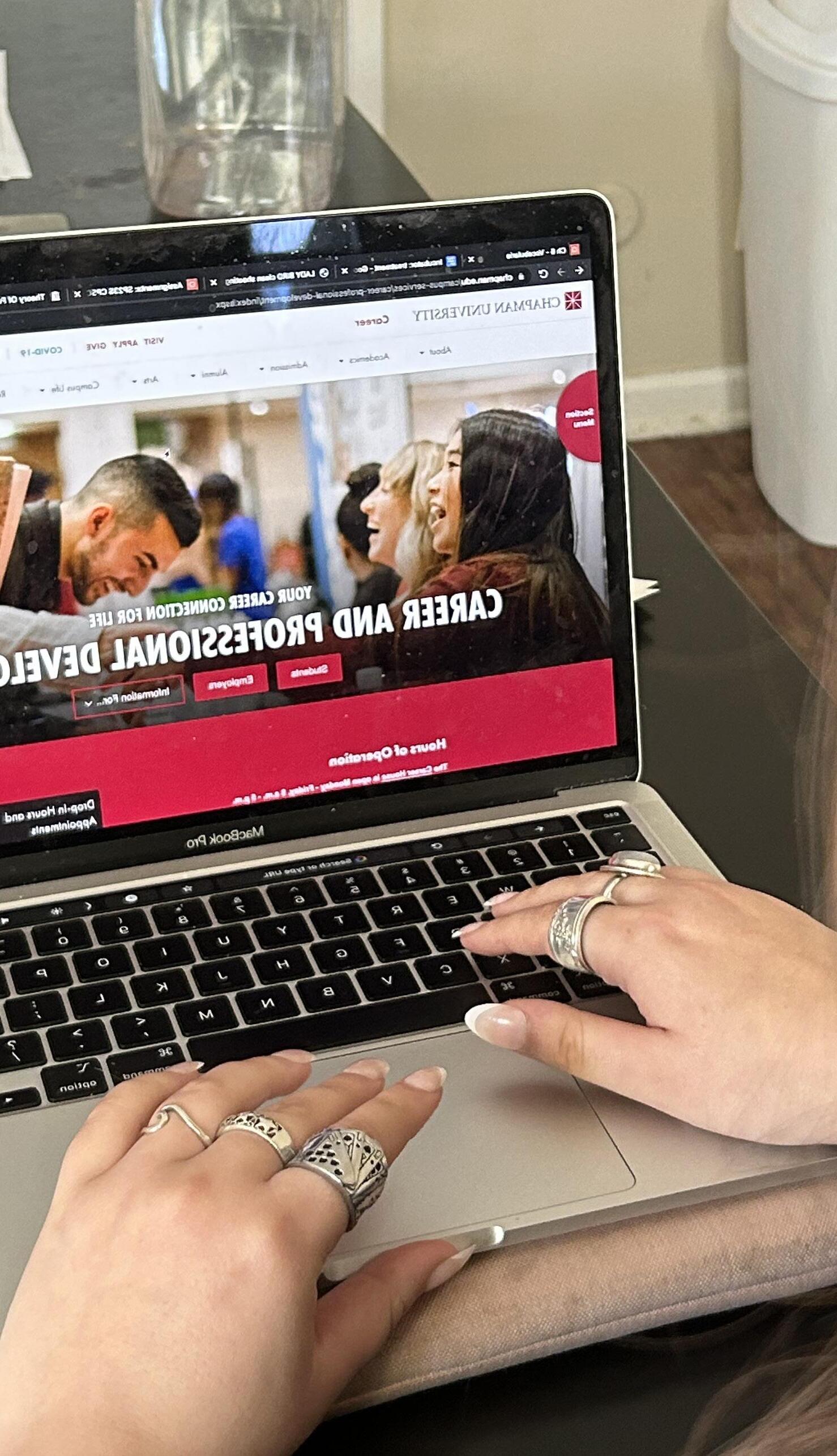
Tatiana Douaihy sifted through endless pages of summer internship positions: some online, some in-person, and some out of state. After applying for more than 20 positions, she landed a marketing internship at Amazon.
Even better, with graduation over this month, that internship has turned into a full time job for her at Amazon.
But how did Douaihy turn a job with an expiration date into a full-time career?
She got her foot in the door.

“I was the only intern in my whole team, so it was definitely a challenging but fulfilling experience,” said the senior strategic and corporate communications and English double major.
Internships are in higher demand, and for good reason. They can get you a job if you play your cards right.
In 2021, employers surveyed reported extending job offers to 79.9% of their eligible interns, a number that has jumped by nearly 20% in the last year, according to the National Association of College and Employers’ 2021 internship and co-op survey report.
And Chapman students are taking advantage of the trend.

“Right now, our data shows that about 76% of Chapman students will have at least one internship experience during their time here,” said Andrea Straccia, director of career and professional development.
But getting an internship is easier said than done. It can often amount to a game of sending your resume to as many places as will take it.
Some students, like Nick De Lucca, also feel that both online and in-person positions have become all the more competitive in the wake of the COVID-19 pandemic.
The junior screenwriting major stressed the importance of making connections and putting yourself out there to get employers to notice. “But that’s really hard when you’re trying to do it through a Zoom screen or over text or over a phone call,” he said.
Renee Elefante, a junior English major, recalls advice given to her by a family friend when first surveying the internship landscape.
“You don’t have to overdo it with a million applications everywhere,” she said. “Just send out a good amount and you’ll hear back from someone because someone somewhere is hiring.”
However, this method doesn’t always result in students getting the dream internship they’re hoping for.
So how can Chapman help?
Walk-in the Office of Career and Professional Development. Or schedule an In-person or Zoom appointment, available as listed on its website.
Straccia makes an effort to understand the struggle that students go through when job hunting and tries to alleviate it through her work as the office’s director.
“I’m very careful about saying everybody has to do [an internship],” she said. “There is always some degree of privilege of being able to find the right opportunity or find something that works with your schedule.”
Even Straccia herself didn’t have the perfect internship experience in college that so many hope for.
Similarly, Carson LeSage, a sophomore peer career advisor at the office, wants students to know they’re not alone in struggling to find internship opportunities that fit them.

He encourages students to take advantage of meeting with advisors of the same age, noting that it’s easier for students to start a dialogue with someone who is in their shoes.
for students to start a dialogue with someone who is in their shoes.
“You’re talking to your fellow students,” said LeSage, a double major in psychology and philosophy. “I’m going to relate to you more on that same kind of level.”
Even with career struggles behind her, Straccia still incorporates her internship experience into how she advises the students that come through her office door.
“I look at internships as a way to prototype an experience in a very low-stakes environment,” she said, aptly stating the Career Center’s ethos.
Elefante took this same approach when interning with Orange Coast Magazine, trying to get a feel for what a journalism career could entail.
“I wanted to see the difference between working at a magazine versus a strictly newspaper site,” she said. “I was learning the difference between that and then figuring out, after I graduate from Chapman, where I want to work.”
Elefante also spoke highly of Erin Berthon, career manager and alumni relations for Wilkinson College, as someone who helped focus her career path.
Berthon preaches the same trial-and-error mentality to the students she advises too, as students must have a faculty advisor to receive school credit for their internship.
She encourages students to try their hand at roles that may seem outside their comfort zones.
“Students have a lot of unique soft skills that they don’t realize they could put into an internship,” she said.
Through testing her comfort zone with an internship, Giovanna Sestito was able to find clarity on what she wants to do with her career.
“I feel like having this internship kind of made me get out of my little scared bubble and put myself out there more,” she said.
Sestito, a senior strategic and corporate communications major, currently interning with Warner Music Group, credits her time with the company for opening her eyes to how the industry operates.
“Because I want to stay within labels, it’s important to have label experience and work with artists one on one because you really get to learn how the music industry works,” added Sestito.
Like most, Sestito hopes her hands-on experience and commitment to her internship will result in a job offer after college, like it did for Douaihy.
And things are looking bright. After all, a 20% jump in job conversion rate for interns in the last year is nothing to scoff at.
But, the biggest step still remains: actually getting an internship.
Straccia and Berthon both encourage students to look into smaller companies in addition to the big names to widen their opportunities.
“It’s wonderful when a student is able to go into an internship at the place that they’ve determined to be their dream employer,” said Straccia. “But that’s not always an option for everyone.”
“A lot of students tend to be so attracted to the big places,” added Berthon. “If they gave the little places a chance I think they would get in more.”
But there’s only so much help the university can give before the decision is ultimately in the student’s hands.
“We have a lot of great resources for Chapman students,” said LeSage. “The struggle is getting them to notice them. That’s what’s hard.”
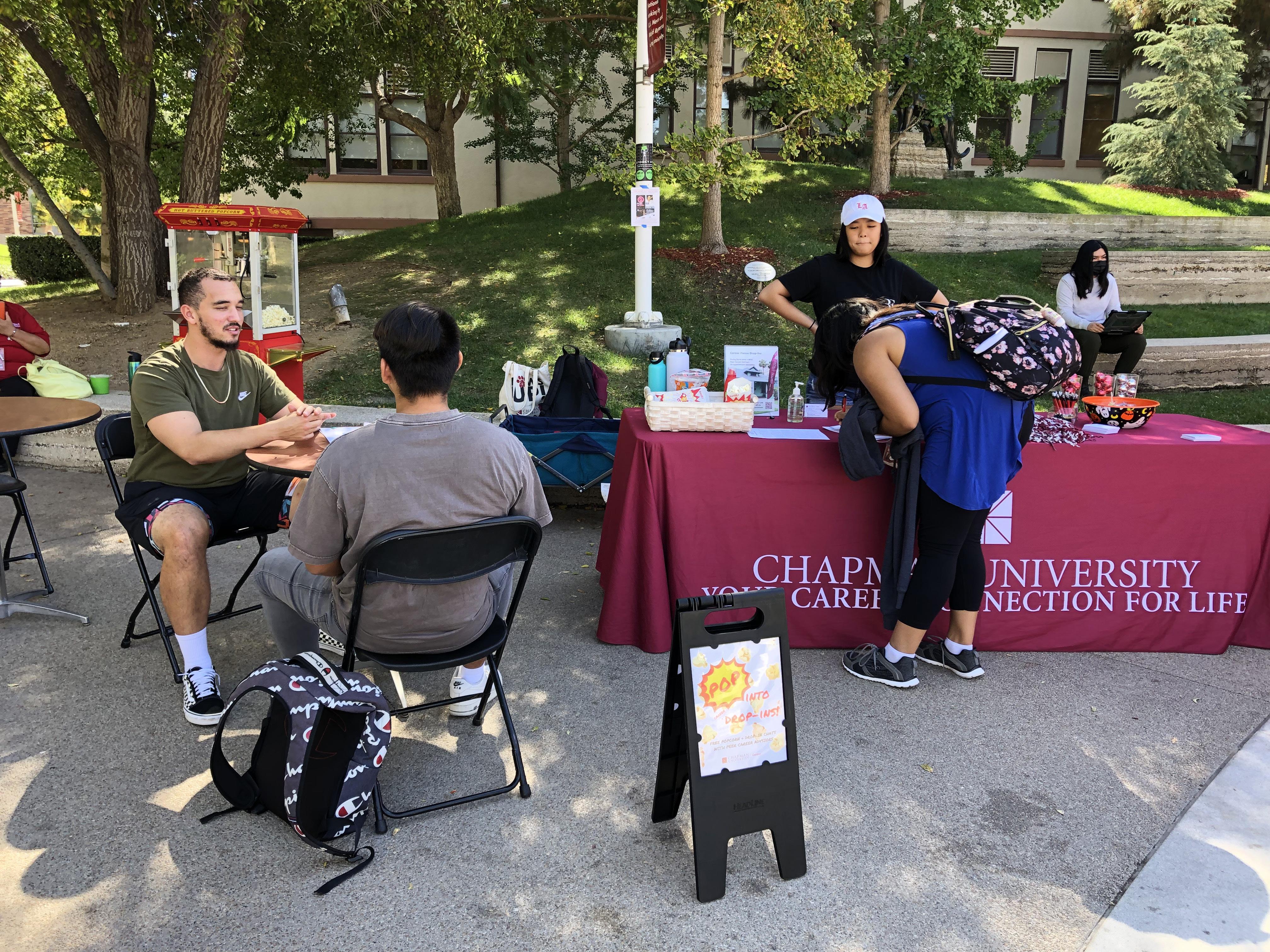
Regardless of if you end up interning with your dream company or not, the process of trial and error can be equally as valuable: showing you a new path you want to go down, or one that you want to avoid.
De Lucca, with a few underwhelming internship experiences under his belt, summed it up with a smile.
“It’s just good to fail while you’re in college, at least being within the four years, it feels like a safeguard where you can fail and restart.”
And when you eventually find the right place, a job could await you.
“I had made really good relationships with all of my coworkers so I think that definitely helped,” added Douhaiy, set to start her full-time position with Amazon soon.

Chapman senior Austin Quintero could hardly miss the “100” signs on his many trips to Disneyland. They were everywhere, from storefronts to statues to Sleeping Beauty’s Castle.
A century of wonder draped across the face of that popular resort.
Most park customers may not know it’s to celebrate the 100th anniversary of the founding of the Walt Disney Company. But Quintero does, and he has to smile.
He wrote his honor’s thesis about that history. And Disneyland would become its star attraction.
“Disneyland is so much more than a theme park to people. It is a safe space to leave behind reality through the



power of escapism and nostalgia,” he stated.”
Quintero is not the only Chapman student who has made Disneyland a part of their lives. The Anaheim resort — a mere five miles from campus — each year is among the top five employers of Chapman students. And students by the hundreds consider an annual Disneyland pass simply a part of their tuition.
“Happiest Place on Earth” became a way to market the Disney brand. But for many students and Chapman alumni, there’s much truth to it.
“I still escape to the park when I have a bad day, want to celebrate a great milestone, or just when I’m craving a churro,” said former Chapman student Leslie McCaddon (1916-1917).
Chapman students who work at Disneyland reminisce on a century of Disney.“It is at Disneyland I feel the most myself — playful, inspired, creative.”

But 100 years ago, it was no more than a dream for Walt Disney. He arrived in California from Kansas City, Missouri in 1923 with $40 and a handful of sketches to pitch his dream cartoon series. Not long after, the two brothers were launching their business, The Walt Disney Company, based in Burbank. One hundred years later, the company has more than 100 films and 12 theme parks.
The first was Disneyland, opened in 1955.
Because Burbank city officials were hostile to the idea, Disney thought Orange County would be a great location. It’s not just coincidence that Disneyland is just off the I-5 Freeway, built at the same time. With the theme park a popular vacation spot for millions worldwide, the company built its sister park California Adventure, in 2001.
And after 67 years of Disneyland, there are 13 original rides still running today such as Autopia, Mr. Toad’s Wild Ride, Dumbo the Flying Elephant.
The park continues to expand and remasters itself into new adventures. Splash Mountain will soon become Princess and the Frog
themed and Tiana’s Palace will sit just a couple of rides down. Tarzan’s Treehouse is turning into Adventureland Treehouse based on 1960’s film Swiss Family Robsinson.
However with so many thematic attractions, not everything can always perform perfectly. Recently at the end of April, a serious fire broke out during the Fantasmic nighttime water and firework show. But that’s the price of magic.
So, what is it like for students who work at this historically famous company?
Well, some love it. Some have had issues.
Working as an attraction host, sophomore Hannah Levine is proud of her connection to the Disneyland Resort. And learning what it’s all about.
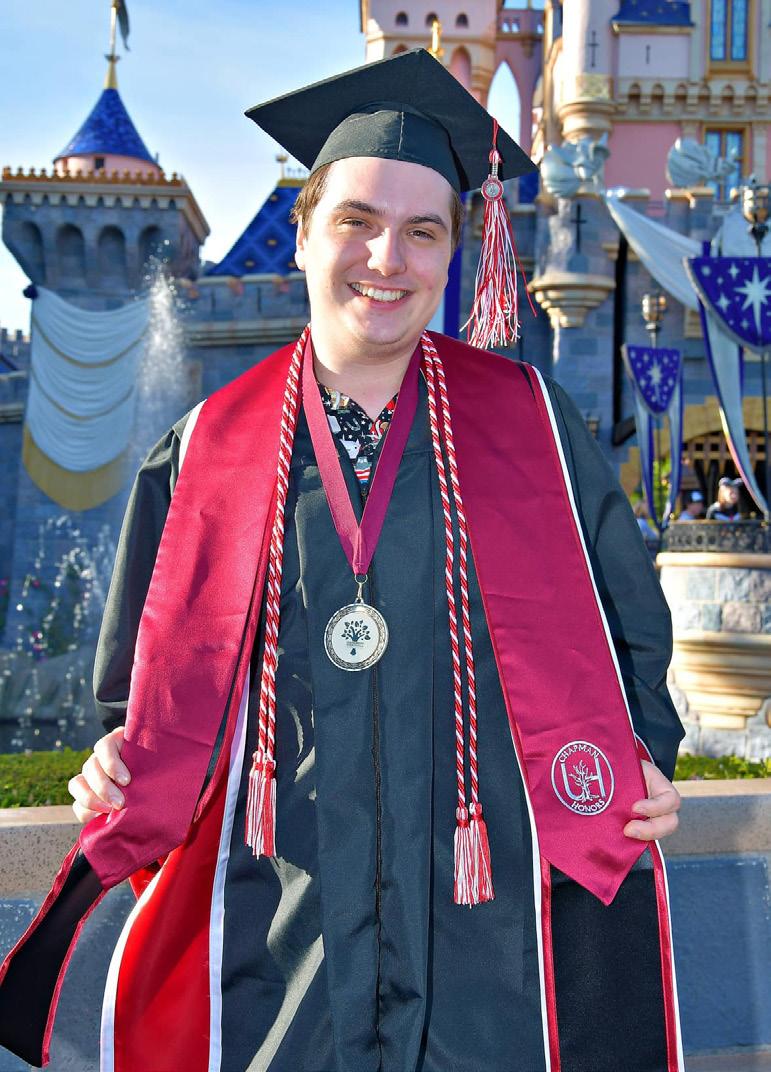
“At first, I thought it was going to ruin the magic, but it honestly makes me appreciate where I work even more,” Levine said.
Levine is real with the fact that no company is ever perfect, but it’s the positive parts of her job that make it worth it. Co-workers are welcoming and she’s constantly learning something new.
Junior Izzie (did not want her last name used) grew up a Disney parks fan and took no time jumping on the chance to work at Disneyland. She also says that working there has been great and they have been considerate.

“They’ve been so flexible with me and my schedule as a student, and that’s been really nice,” she said.

Not to mention the incredible perks cast members receive like free tickets and discounts. Otherwise, a oneday ticket costs anywhere from $104 to $179 or an annual pass starting at $449.
But one sticky issue for some students is the problem of scheduling.
Alumni and ex-Adventureland cast member Kyra Murphy described her journey as a rollercoaster. She enjoyed her cast mates and the guests but there were some hard times.
“The Disney look, too, was a little stifling and hard to get used to,” Murphy said. “Their inflexibility with schedule was really hard at
times, probably the hardest part of the job for me since I was still at Chapman then.”
Murphy mentioned the inability to provide a stable schedule.
“It’s such a rewarding job because I get to be a part of making magic for all the guests around me,”
– Hannah Levine
The company telling her that availability was a ‘preference’, and that “they would schedule [her] when they needed regardless of [her] school schedule.”
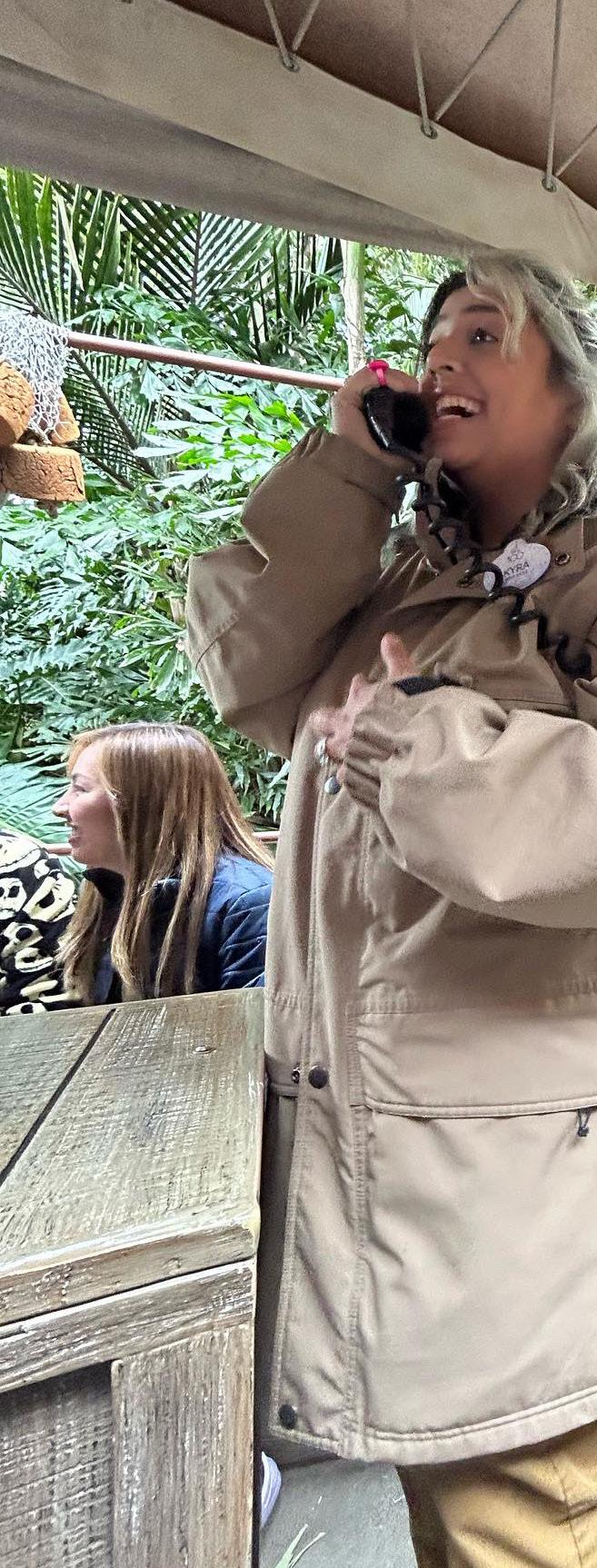
Sophomore Eric Hoffman has also had problems with scheduling. His only cons being “management not always good” and “scheduling issues sometimes”.
“Only negative specific to this job would be some scheduling complications,” Hoffman said.
Junior Marjoie Stemmler actually quit because these scheduling issues “got too much” for her. She says that maybe she will go back one day but while she’s a student, it can’t happen.
“They needed me to work a lot, and when I would try to tell them I have school or I am busy I would still get scheduled and there wasn’t much they did to help,” Stemmler said.
Scheduling aside, it doesn’t change the enjoyment of their job. The atmosphere seems to be created by cast members as they cherish each other like family. When discussing the best parts of the job, Murphy, Hoffman and Stemmler all agree on great co-workers.
“Everyone there was so sweet and many of them made my experience amazing,” Stemmler said.

Among the mainstays at Disneyland has been Tinkerbell. She was created just two years before the theme resort opened, but she’s been a star attraction ever since.
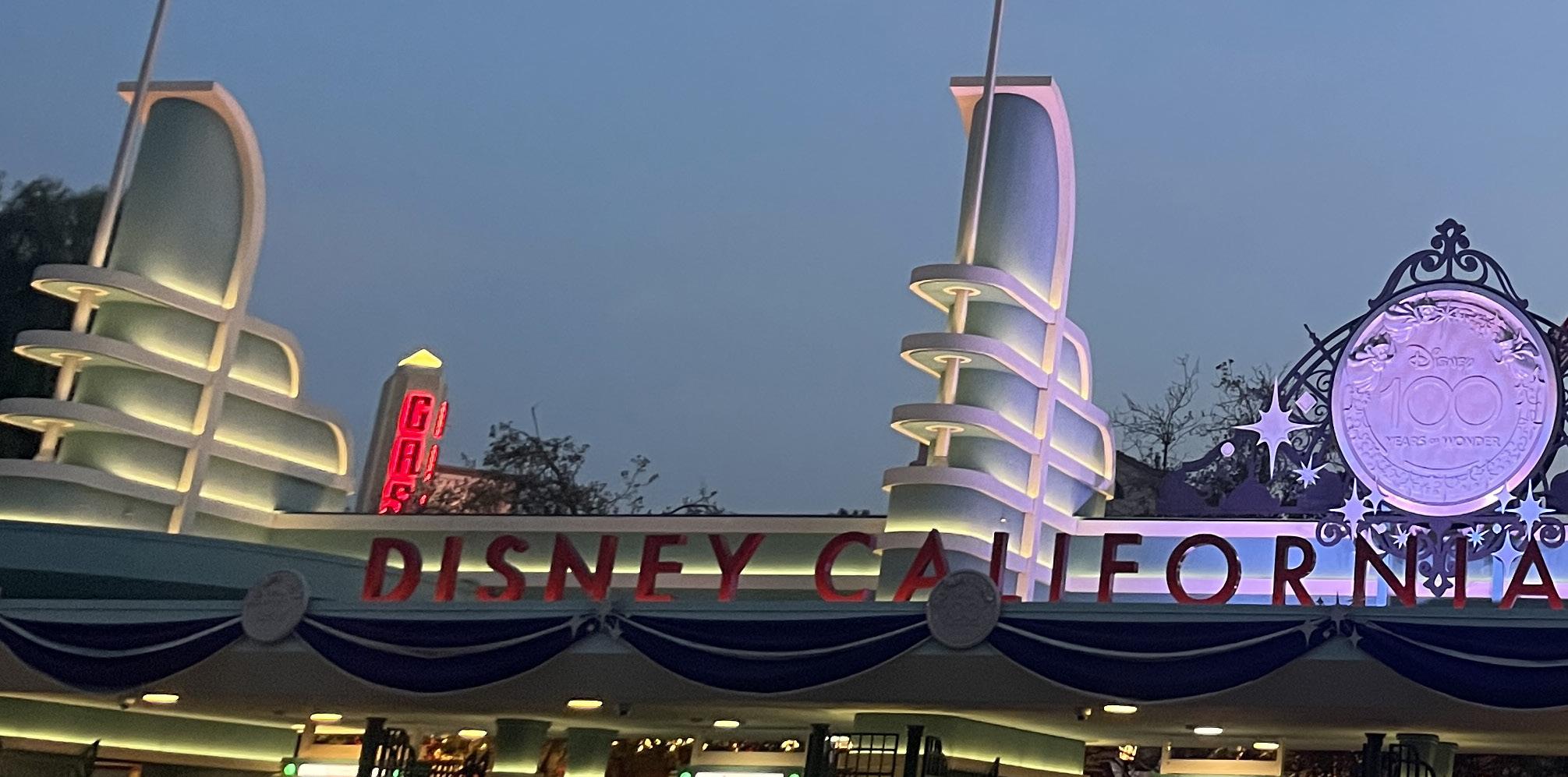
Chapman
Alum Kyra Murphy entertains Disney patrons as they venture through The Jungle Cruise. Photos courtesy of Kyra Murphy
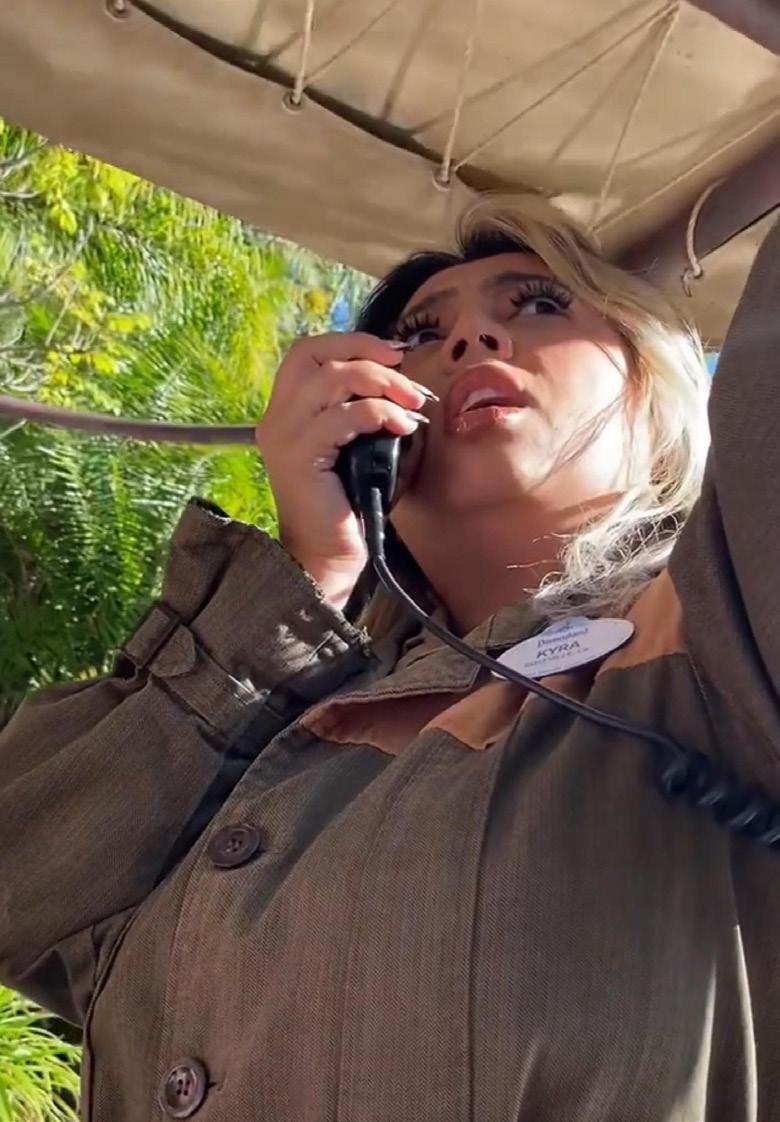
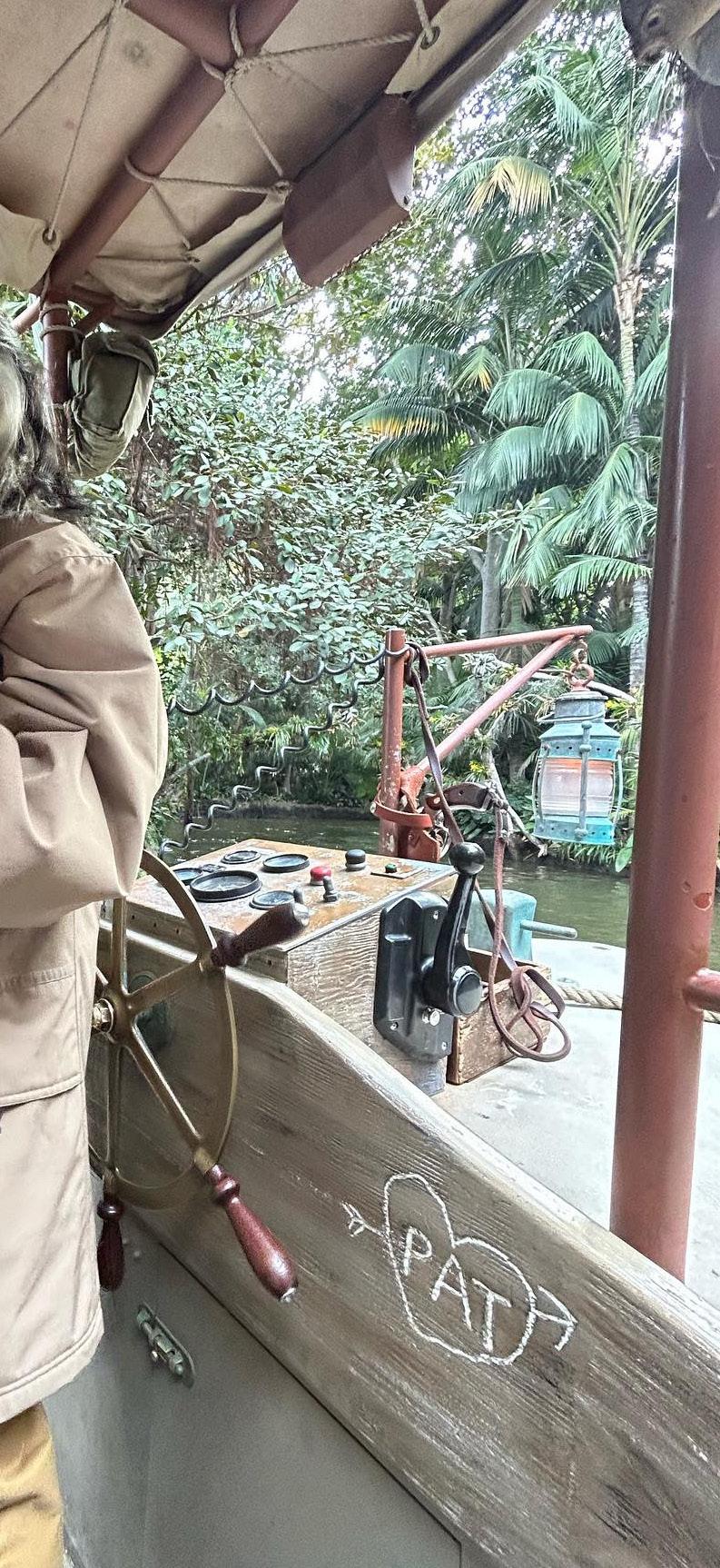
One Chapman student, who asked not to be named, gets to play her now in the daily parades. Another veteran from those parades is recent Chapman grad Natalie Benson. She still works for Disneyland in a
training executive position.
“Growing up, Disney stories taught me how to be brave, heroic, resilient, and kind,” Benson said. “As a cast member, I had the privilege of keeping these stories alive by sharing them with the Disneyland guests.”
To show just how important Disneyland is for Chapman students, it has its own student Disneyland club. Quintero was once its vice-president.

Quintero has suffered numerous deaths of family members he was close to, and Disneyland has helped him escape from tragic moments:
“It transports me back in time to better days. The waves of nostalgia wash over me and enwrap me like a warm hug. It has become a place to revisit loved ones and a place to take pause from the ordinary.”

Question marks begin to loom as graduates plan for the future. Illustration by Jaelyn Duran

With graduation approaching, senior Tatiana Douaihy is trying to be excited about what’s next.
But for Douaihy, the prospect of leaving a familiar phase of life in college and entering into an unfamiliar one is actually quite scary.
“Being international, Chapman has really become my home and now everything is about to change,” she said.
But she's not the only one who feels this way.
This transition can be overwhelming when you've been in school for 15+ years and hardly know anything different. A 2021 survey by the National Association of Colleges and Employers reports 62% of college seniors feel anxious about job prospects and plans after graduation.
There is an aspect of “senioritis” with losing academic motivation. But what’s bigger is the anticipation of the life ahead of you. The endless job search, new friends, a new location or the one we thought we escaped…moving back in with your parents.
So, the big question we hear: What are your plans after you graduate?
Dean of Students Jerry Price isn’t surprised that college seniors can be overwhelmed over these plans.
“I would say 62% feel anxious and the other 38% are lying,” Price said.
Price goes on to say there are students at the traditional age and attending full-time but also parttime students and graduate students. One piece of advice he tells all graduating seniors:
“Your first job does not matter.”
Price says students put too much emphasis on what that first job is and there’s no way to know if it's the right one. It’s there to be valuable in the sense that it helps you learn more about what you want in the future.
But does it matter to students?
Graduating a semester earlier, broadcast journalism major Adrienne Mitchel was faced with the “pressure to have a job lined up” and where to live in no time. Mitchel didn't want to take just any job to stay in Southern California though but she did have exciting hopes for one.

Mitchel said, “I didn't get the job so that was a little depressing. It's kind of like when you're applying to colleges and you really wanted to go to a specific college but they reject you and you're like, ‘damn am I not good enough’.”
Mitchel is back home in the Bay area working two part-time jobs at the Los Altos Town Crier and Peet’s Coffee. But the challenges haven’t stopped there. It can be lonelier compared to college when you're not surrounded by friends at all hours, so she returned to campus to revisit some friends.
“It made me so nostalgic…I was like, ‘you guys are having so much fun and I'm just off by myself bored most of the time’ but the thing is, you do have to grow up at some point,” Mitchel said.
Film production major Natalie Cartwright explains how not having a job lined up is quite intimidating. Especially with the film industry being a mess with the Hollywood writers strike. Not to mention having to pay rent without a job.
“I'd say the toughest thing about senioritis is wanting to be done with it,” Cartwright said. “But at the same time it's terrifying to finally face this reality.”
Triple major Joy Joukhadar is also terrified to face the real world with how the job market and economy is. And how it can still feel hopeless, even if you have a strong resume.
Joukhadar said, “It's just really nerve wracking because it feels like everyone is just seeing the worst possible outcome for the future.”
Joukhadar plans to save up and move to Los Angeles, work fulltime, and start applying for her Masters within the next two years. But for now, focusing on school is significantly different than Joukhadar thought it would be.

“If it's doing well on a 10 point quiz versus finding a job for the future, my priority is the job,” Joukhadar said.
Already having secured a job offer, communications and English double major Douaihy still finds herself less motivated and stressed.
“In high school after I got into college, I feel like I just stopped caring as much but it wasn't to this level of what I'm experiencing now,” Douaihy said.
Tatiana Douaihy speaking during Alpha Kappa Psi recruitment, which she is the Vice President of Membership. Photo courtesy of Tatiana DouaihyAs an international student from Lebanon, Douaihy wanted the security of a job, but there is still uncertainty around it.
“It's my biggest stress because I don't even know what state I'm going to be in, if I'm going to be remote or in the office. I don't even know what team I'm in,” Douaihy said. “I just have no idea.”
And she won’t have an idea until June. Two weeks after graduation.
Following a different path, chemistry major Ben Janda decided to attend graduate school. But there’s still planning to be done with applications on top of your academic workload.
“It was pretty chaotic balancing those two things and my job, but I knew it was something that I really wanted to do so I set goals for myself,” Janda said.
Having a plan set in stone, Janda is excited to graduate and further his research experience. He will be attending the University of California Los Angeles for a PhD in chemistry.
“I am a little lucky in the sense that I'm doing grad school and it's a structured thing rather than having to jump straight into the job market which is stressing out a lot of my friends,” Janda said.
Whether it's a career or grad school, Amy-Jane Griffiths is here to help.
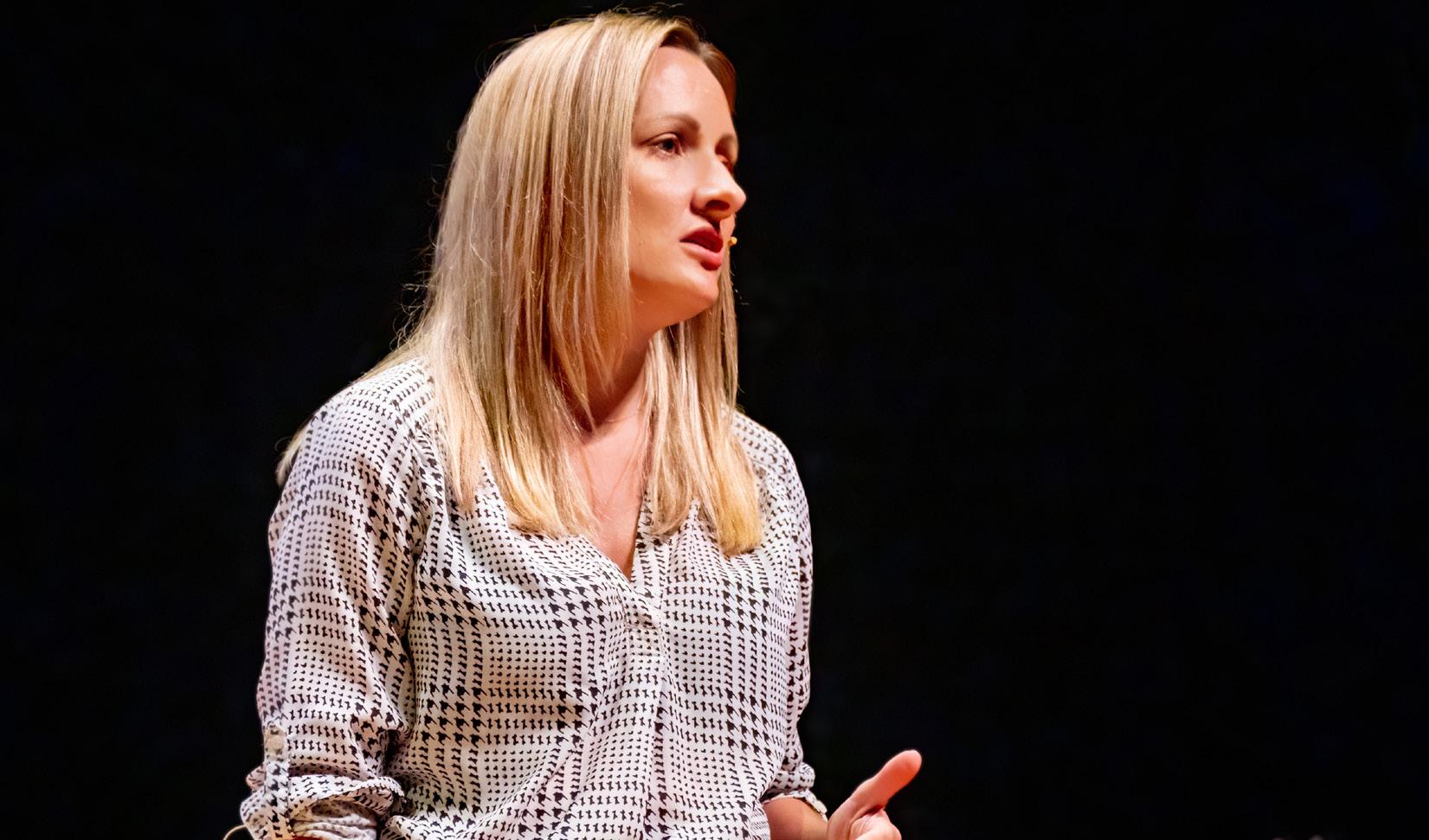
Griffiths, an associate professor in the Attallah College of Educational Studies, says it's important to understand the context that seniors are nearing the end of their academic life. There are a lot of feelings involved such as vulnerability, anxiety, excitement, and nostalgia.
But there are ways to alleviate the negative feelings. Griffiths suggests finding ways to figure out what motivates you internally.
“First of all, students don't have to feel like it's happening to them and like there's nothing they can do," Griffiths said. "But what they can do is take ownership over it.”
This could be asking yourself: What is important to me? What are my values? How can I engage meaningfully with my community? Research also shows perceived support—the feeling that you have people to talk to—is a big help.
As for the university, Griffiths believes it’s important to create meaningful relationships and provide supportive resources. She says that often, both faculty and students lower expectations, but it is not effective. What faculty should do is challenge students with high expectations while also giving them autonomy.
“I always say to students, give yourself grace. We don't have to have it all figured out and it’s a process,” Griffiths said.
She added:
“Don’t worry about the end result because some of us are 40-50 years old and still don’t know exactly where we're going.”

Inside the basement of Leatherby Libraries, junior Jessica Kim watches the time slowly approach the third hour of her journalism class. The only thing worse than being in the basement for three hours?
Being in that same room for NINE hours.
“There’s times where I start experiencing headaches and nausea because you’re not getting fresh air for so long,” said the English major.
It’s not uncommon for students’ class schedules to include three-hour-long classes. Some schedule that way to give themselves longer weekends. But unfortunately, some courses only offer that option, so students often wind up with a schedule of classes back-to-back, in three-hour blocks.
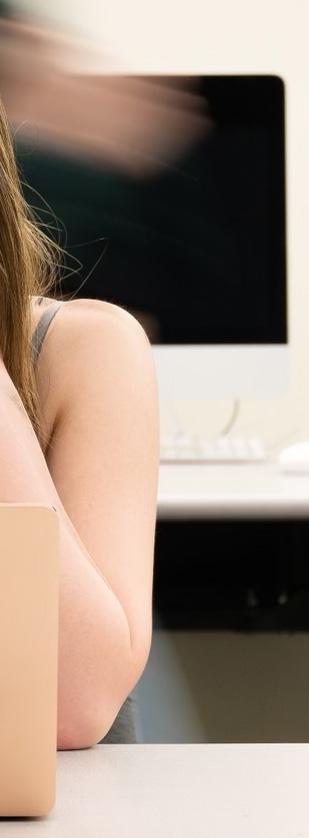
According to Annette Casas, who oversees scheduling in the Registrar’s office, classes are set up based on classroom availability.
“If you’re going to be using a general-purpose classroom, you have to adhere to the time periods because we’re trying to efficiently use the rooms. And we’re trying to make sure that
it doesn’t mess up your schedule as a student,” said Casas.
The question is, how does sitting in one classroom for nearly three hours straight affect students’ academic success and wellbeing?
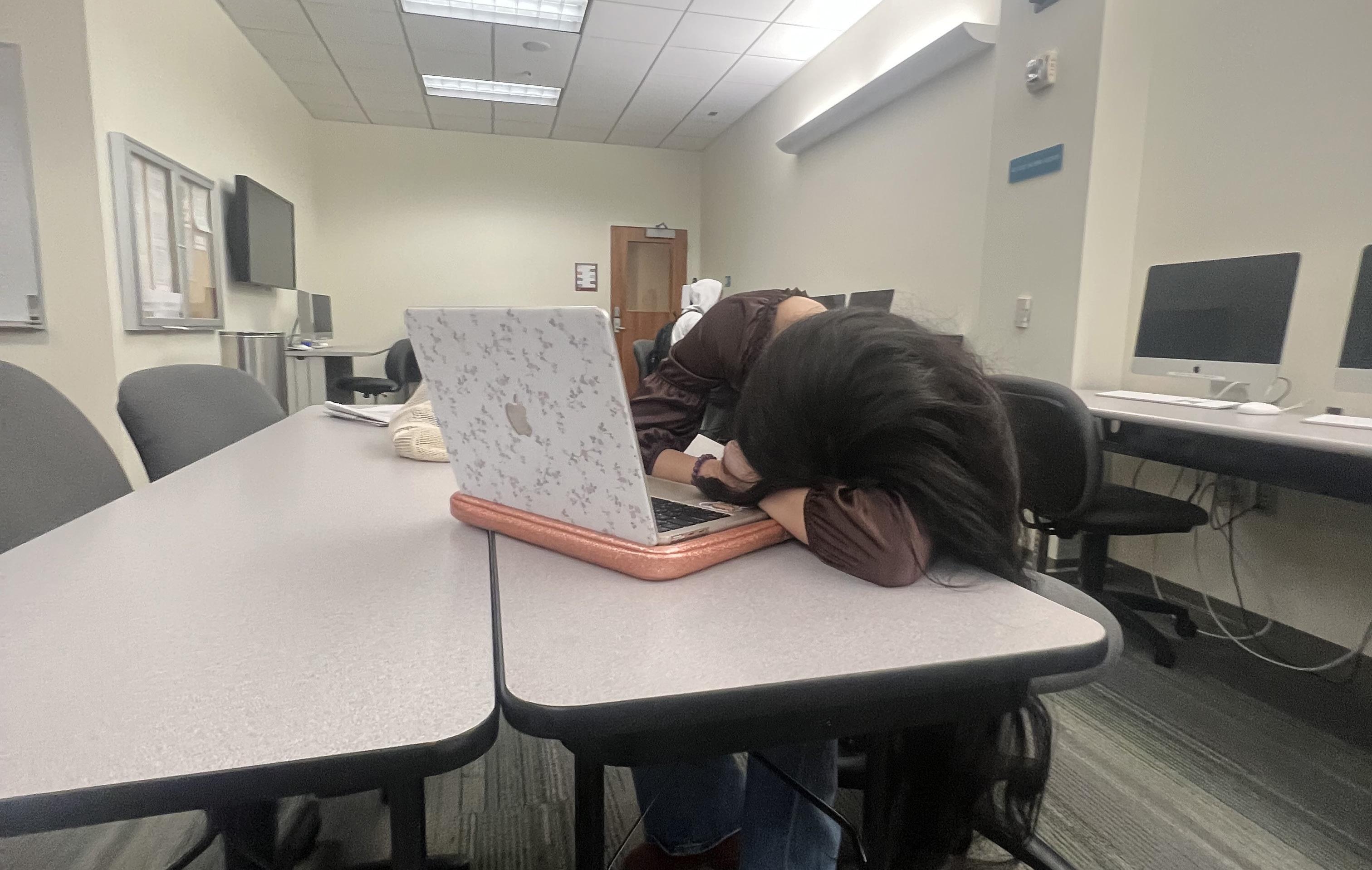
Dean of Students Jerry Price suggests students take a selfassessment when creating a class schedule.
“It’s more a matter of kind of doing an honest selfassessment of what your strengths and weaknesses are,” Price said. “So while it might be convenient to take this class, you might really need to ask yourself, ‘Am I really at my best at that time?’” said Price.
For those who don’t have any other choice if they want to graduate on time, the schedule can be grueling.
Junior Skyler Doyle-Ortega said the only option offered for
Production Design MFA student semester she had class on Saturdays.
“If we’re doing one of our productions, for that, because they’re shot during “So that’s kind of hard sometimes.”
Blue sometimes finds herself in her involvement in production
Kaylee Kent, who commutes to home after long classes is tiresome with her sleep.
“I’ve noticed with my sleep, it’s [I’m] trying to stay awake and attentive,
Junior Skyler Doyle-Ortega waits for her next three-hour class to start, knowing she is going to be sitting in the same seat for a total of nine hours. Photo illustration by Skyler Doyle-Ortega
the classes she needed was three back-to-back classes, all nearly three hours in length.
“I’m in the same classroom for nine hours with no windows,” said the English major. “We’re lucky if I eat between classes those days.”
The typical 9-5 is an eight hour work day. These students sit at the same desk for nine hours without a lunch break. Longer than a workday. At least in a job, you get a lunch break.
This doesn’t only affect undergraduate students. student Robbie Blue said one Saturdays. productions, we have to miss class during the weekend,” she said. sometimes.”
in the classroom until 2 a.m., as design demands crazy hours.
problems for students like campus. Kent says driving tiresome and has caused problems gotten a lot worse because attentive, it’s harder for me to
fall asleep at night,” said the junior psychology major.
Kim suggests that the slightest bit of improvement could be rotating classrooms within the major so students aren’t stuck in the same seat all day.
Professor of Health Sciences Caroline Wilson goes the extra mile to ensure students aren’t just sitting listening to her lecture for three hours straight.
“I chose a three hour block because I like to run activities in my class. I use Team-Based learning so it is a flipped class, it is not straight lecture,” she said.
Price offers advice for students to carve time around their class schedule to take a quick walk outside to breathe.
“I’m a big believer in the connection between our physical, mental, and intellectual selves. If students have long days, they can build in 30 minutes just for a walk,” said Price.
"There's times where I start experiencing headaches and nausea because you're not getting fresh air for so long."
- Jessica kim
Sitting at home restless, with nothing to distract her from her problems and loneliness, Erica Hu is sick of the mundanity of life.
Her remedy?
Raves.
“Raves really helped me because it’s like a little blip in my life,” Hu said. “Every few months I could just let loose and go crazy. And I could go back to normal life and it’ll be like nothing ever happened.”
Raving is a popular electronic music dance party pastime among young people, but especially among Asian American students.

According to Judy Soojin Park, a researcher at Harvard University, Asian Americans are
often seen as “perpetual foreigners,” which is why they enjoy the welcoming community and sense of belonging at raves. Raves have become a safe haven for many in the Asian American community, where it is an escape from the high expectations pressing down on them.
The academic demands Asian parents have for their Asian American children cause them to seek escape from their academicallyfocused lives, according to Wenshan Jia, a communication theory and intercultural communication professor.
“Their mundane life has been all about achievement,” Jia said. “They accumulate so much mental stress, even physical stress. And so going to attend such a festival would allow them to have a sense of liberation and a sense of escape.”
The acronym was coined by American dance music DJ Frankie Bones in the 1990s and is still considered the cornerstone of raving today.
“PLUR is really important for the rave community because that’s the one thing that makes us stand out from everything else,” Hu said. “That’s the place where people go to just be themselves and not be judged.”
Vivian Tran, a senior health science major, and Kathy Nguyen, a 2022 graduate, are in the same rave group. They echoed the same sentiment as Hu.
The word “rave” originally referred to illegal parties where DJs played house music in abandoned warehouses and fields. The term eventually broadened to include electronic dance music, or EDM, concerts and festivals.
Hu’s first rave was Countdown in 2018. It wasn’t until she went to Electric Daisy Carnival, or EDC, in 2019 with her Chapman friends did she identify as a raver.
“It was something that broke me out of my comfort zone and myself because I was a pretty shy and quiet person. It introduced me to a whole new genre of music that I never thought I would be interested in,” Hu said.
Hu continues to rave even after graduating from Chapman in 2022 because of Peace, Love, Unity, and Respect – PLUR.
Tran said she enjoys raving because of, “the unexpected friends you meet. It’s a judge-free zone. You can just act however you want, talk to anyone. People are very inviting.”
Though PLUR can act as a tool to unite people of all races and backgrounds, Park wrote that EDM festivals are dominated by middle-class whiteness. PLUR can act as a tool to hide that strong presence of whiteness by creating a utopian image of raves. Despite EDM festivals’ association with middle-class whiteness, Asian Americans still find acceptance within the events.

Along with the sense of community, Tran and Nguyen go to raves because they enjoy the music and laser shows.
Tran and Nguyen both believed that their experience at a NGHTMRE rave was unfortgettable.
Neither of them were dressed for the rain, the night was still a dream.
“It was like a main character moment,” said Tran.
They weren’t prepared to see what a light show and rain would look like when they mixed together, either.
“It looked like glittery lasers,” Nguyen said. However, what Nguyen and Tran love most about raving is getting wild. It is not new for the two to dive into mosh pits and do triple stacks and fall off of shoulders.
Though raving is not a part of Asian culture, many Asian Americans like Hu, Tran, and Nguyen find themselves deep into rave culture. Many Asian Americans view raving as an assertion of freedom from the strict rules they had to follow during childhood.
“I think it’s just because many Asians were sheltered a lot of their life, and once they get to college, it’s like a way for them to get out and get fucked up,” Tran said.
Through this source of freedom, Asian Americans also find a sense of belonging within the rave community.
“In social life, you don’t see much interaction among different groups of the Asian American community,” Jia said. “But I think this might be a great way to help Asian Americans of Asian heritage to create some shared identity, to cement their shared identity, by participating in this kind of festival. And that is probably why they all love to go.”
There are also noticeable trends within Asian Americans who are getting into raving. Hu noticed that Asian Americans tend to ease their way into EDM – rather than diving headfirst into bass and hardstyle, they start out listening to melodic artists like Slander and Illenium.
“A lot of people, especially Asian Americans, start off with sad boy EDM. So it’s a way to ease into it. And then they go into headbanging kinds of songs,” Hu said.
Whatever genre it may be, most ravers only experience the final production. Rave photographer Niko Ramirez is different – he sees the preparation that goes into it. As an observer from backstage and the crowd, Ramirez said he has a different perspective.
“I see more logistics and the mechanics that go into shows,” Ramirez said. “There’s a lot that goes into it and people don’t really like to see that sometimes. So I think just being backstage for once is a really important experience.”
The most striking aspect of raving Ramirez noticed as an outsider was the normalization of drug use. The prevalence of drugs, popular ones being different forms of MDMA called ecstasy and molly, is symbolic of the freedom of raving. The only time drugs become a problem are when people are too “fucked up” to maintain PLUR.
“In the past year or so, some kids or new people that are new to [raving] completely do not care about the other people there at all,” Ramirez said. “They’re just there to get fucked up on drugs and overdo everything.”
Hu, Tran, and Nguyen agreed that ravers in recent years have not upheld the essence of PLUR. This is what is commonly referred to by experienced ravers as the death of PLUR.
“A lot of people have been saying PLUR is dying because raving has become so trendy. The new ravers don’t learn about what PLUR means or the old ravers have not taught them,” Hu said. “So they go in and shove their way through crowds and don’t really say anything, which is like what pisses off a lot of the older ravers.”
To keep PLUR alive, new ravers should say, “excuse me,” and, “thank you,” while pushing through crowds to be welcoming to all ravers.
Hu listed several survival tips for new ravers:

“When you go to the rave, the first thing you need to do is restrooms and water. Because like, you gotta pee.”
Additionally, baby wipes are important to survive toilet-paperless porta potties. Hu also said to turn off iMessage and texts will send smoothly, since venues would definitely lack WiFi.
And of course, the most important piece of advice is to keep PLUR alive.
Each new generation of ravers brings with it a new rave culture. However, the one thing that has remained constant since the early days of raving is PLUR – and it’s up to the new ravers to keep it alive.
“We’re going to do our part to educate the new ravers on PLUR so it lasts for generations to come,” Hu said.
 Niko Ramirez, who often spends time behind the scenes as a rave photographer and videographer. Photo courtesy of Niko Ramirez
Niko Ramirez, who often spends time behind the scenes as a rave photographer and videographer. Photo courtesy of Niko Ramirez
During Chapman sorority recruitment, senior Olivia Armstrong trembled in front of more than 100 women, taking a deep breath before speaking about overcoming a vicious four-year cycle with food and exercise.
But it wasn’t just weight she lost. It was her heart health, her bone strength.
“There is no gold medal for being the most sick,” Armstrong said. “The prizes I won came in the form of doctor visits.”
But one new method to skinny growing popular makes Armstrong cringe: Ozempic.
Ozempic, Hollywood’s new miracle drug for weight loss, has people wondering if skinny isn’t skinny enough. Not only is it highly expensive, but this once-weekly injectable medication comes with a long list of consequences for not only the people using it. But also those who aren’t.

Diabetics who actually need Ozempic find it in short supply because of its popularity with those who don’t.
Comments like: Those shots must be worth the money, and, Heroine Chic, have spread like wildfire across TikTok and Instagram. There has been speculation that celebrities like Kim and Khloe Kardashian were on the injection, but Khloe denies using it. True or not, the Kardashian name has drawn strong interest to Ozempic for many with weight struggles.
Armstrong gets frustrated seeing superficial TikTok trends promoting this unhealthy trend.
“Ozempic is a medication for diabetes,” she said. “If you watch one video about that drug, it’s gonna keep popping up and popping up, and then you get in the spiral of ‘what is this,’ or ‘how do I get this?’ It’s super harmful.”
For Chapman students like Armstrong who have lived with an eating disorder, it’s dangerous to watch role models engage in this unhealthy weight loss method. Research shows media exposure is directly connected to risks of disordered eating. According to the National Eating Disorders Association, eating disorders usually begin between 18 and 21 years-old.
Millions have scrolled through TikTok and seen the newest weight loss trend: Ozempic, a diabetes drug-gone-viral. It’s increasingly prescribed off-label and speculated to be the magic behind many celebrity transformations. But there’s a bigger picture. Photo illustration by Alexandra Davenport

Mara Snee, director of academics for the physician assistant program on Chapman’s Rinker campus, said that this weight loss trend can be harmful for those using it outside FDA guidelines.
“Social media trends or celebrities sensationalizing use of this medication outside of its recommended use is harmful,” Snee said. “It can be more harmful for those with eating disorders or those that manage weight to an extreme.”
The “Ozempic diet” isn’t only unrealistic, but it isn’t even approved by the FDA for weight loss.
Jelena Lewis, assistant professor of pharmacy at Chapman’s Rinker campus, explained Ozempic is for people with type 2 diabetes, a chronic condition, to help control blood sugar. Ozempic is able to be injected once a week, and each pen holds several doses of the drug. A doctor may start a patient on a lower dosage and then increase it over time.
The big seller for Ozempic is the company’s catchy commercial: O, O, O Ozempic. The commercial does address type-2 diabetics, it later boasts about weight-loss and no added risk to heart attack, appealing to a broader audience seeking a way to shed pounds quickly.

For type-2 diabetics taking the injection, the Ozempic website lists side-effects, such as nausea and diarrhea, turning off the brain’s hunger signals. The New York Times reported that an extreme risk of using Ozempic can even be malnutrition.
For the population using it outside FDA guidelines, the same side-effects makes users not feel like eating and to get full really fast.
“It’s a quick fix and I think there’s better ways to go about it,” Lewis said.
Lewis said that if the doctor knows the patient is using the medication for weight loss, they should prescribe Wegovy instead of Ozempic to keep Ozempic accessible for diabetics.
“When the celebrity gets Ozempic, and they don’t have diabetes, they’re actually taking the medication away from someone who has diabetes and who could benefit from Ozempic more than just weight loss,” Lewis said.
The FDA notes that a shortage of some Ozempic dosages goes back to 2021, when the FDA approved Wegovy, the exact same medication as Ozempic, but labeled specifically for weight loss.
Yet people prefer that Ozempic is cheaper, and when Wegovy ran short about a year ago,
Ozempic flew off the shelves. In December 2022, a reported 1.2 million Ozempic prescriptions were filed in the United States.
Though it costs less, Snee said that just one injection of Ozempic can still cost anywhere from 500 to 800 dollars. Diabetics who need it can use insurance to cover the costs. Through insurance, cost per month depends on the 30 or 90 day supply of medication.
But celebrities are putting down cash. Since it’s not FDA approved, there’s no Ozempic pricing specific for this use. If used in this way, pricing varies on dosage. Its commercial emphasizes “as little as $25.” But that’s only with a few specific insurance coverages.
Though not confirmed, hundreds of articles have speculated that celebrities like the Kardashians have used the drug to go from thin to thinner.
And for college students hoping to lose weight like their favorite celebrities, Ozempic may be out of budget. So what lengths will young people go to to achieve the Kardashian body? For those using Ozempic outside FDA specifications, the answer is to just not eat.
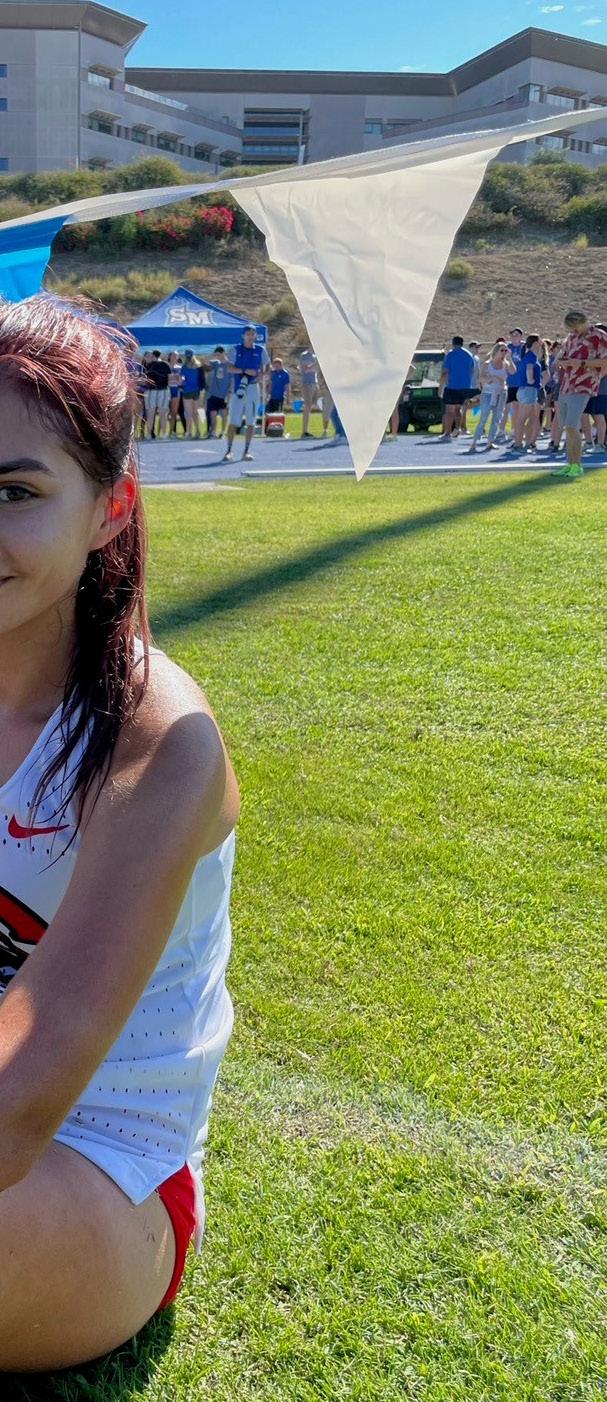
Snee said there are risks and benefits to using Ozempic. Her graduate students must decide if those benefits outweigh the risks when evaluating a patient. She said medical providers have an ethical responsibility to prescribe this medication to patients who fit the FDA specifications.
“Our oath tells us that we should not cause harm, and it tells us that we should always be acting for the good of the patient,” Snee said.
Snee added that research needs to continue on the long-term effects and outcomes of the medication and its longevity.
Stephen Rossi, a physician assistant graduate student, said while some drugs can be used for weight loss, Ozempic is a new player. Trials and studies tested the medication for people with type 2 diabetes, not patients already at a healthy weight.
While the drug is suitable for those with type 2 diabetes, the implications for cosmetic weight loss is a big question mark.
He used the example of the celebrity population getting their hands on a quick solution, as promoted on social media. They might be trying to lose 10 pounds in a week for a wedding.
“You give this drug to people for a long time, at a certain dosage, and a completely healthy individual with no other conditions [and] it might have a whole other host of problems that we just don’t even know about yet,” Rossi said.
For patients with type 2 diabetes, Ozempic is used to lower glucose levels and slowly lose weight. For people using Ozempic for a short period, the weight comes back after stopping injections.
“We wouldn’t want the person to lose 10 pounds in a week,” Rossi said. “Not only is that a great expectation, but it’s also not a healthy expectation.”’
It’s a yo-yo diet, and Rossi said Ozempic was never meant for weight loss like that.
Juliette Jorgenson, a junior education major with a minor in nutrition, was shocked and scared when she heard about the Ozempic trend taking over social media and putting peoples’ health at risk.
“I know it’s really hard because the media is everywhere, and as young college girls, we look up to influencers and celebrities,” Jorgenson said.

Juliette Jorgenson is a fitness instructor at Chapman and at a studio in Orange. After graduation, she plans to become a registered dietician.

Photo courtesy of Juliette Jorgenson.
Jorgenson is concerned about the ties between disordered eating and using Ozempic to suppress appetite, and hopes people will recognize the potential health risks that outweigh obtaining this standard of beauty.
“Knowing that it shouldn’t be used for what it’s being used for hopefully can help influence some people away from the influencers,” she said.
It’s not only hard for those in the trenches of an eating disorder, but also for those who have come out on the other side in recovery.
“I know it can be difficult to be trying to recover and adopt a healthy mindset, only to see influential figures promote the very behavior you’re trying to recover from,” Armstrong said.
Now fully recovered, Armstrong feels proud of herself for speaking in front of that group of women during sorority recruitment. If she helped just one woman escape a similar cycle and ignore damaging body trends, it was worth it.
“It’s being marketed by celebrities as a miracle drug. But is it?” she asked.

Armstrong said taking an off-label prescription to be skinny is a dangerous extreme. For women struggling with eating disorders, she said it’ll never be enough. The competition never ends.
Armstrong added:
“Why would you want to compete with someone on who could be sicker?”
Ryan King frustrated while using his coding software, Tableau, as he waits for his code to run. A problem that occurs often, due to his computers slow processing power.
Photo illustration by Sydney Scott

Have you ever wanted something electronic that could take on cancer and COVID-19? A supercomputer that can be one million times faster than the fastest laptop you can carry in your backpack?

A supercomputer is like a regular computer on steroids.
And Chapman is about to have its own.
The first community-operated one in the nation.
And junior Ryan King couldn’t be more hyped.
“It’s awesome!” the data science major said. “It creates so many opportunities for students in every major.”
The computer, which is being installed in the Beckman Hall Data Center, will be accessible to a large number of community organizations as well as Chapman students and faculty. However, according to the Dean of Fowler Engineering Andrew Lyon, community groups will have to apply to get their hands on it. He’s just excited that it’s Chapman-based.
Often, data centers can include hundreds of supercomputers, however the AI system from NVIDIA can do the job of 125 of their previous model. It can be hooked up to a monitor or laptop to output the information and it can process data and perform large and complex mathematical equations 83 times faster than a regular computer.
They are mainly used for scientific and engineering applications and are commonly used in weather forecasting, oil and gas exploration, as well as environmental and molecular mapping research. But scientists say they can also be used for data that can help excel the fight against numerous diseases, including cancer, or even COVID-19.
“Since it is for community use the possible list of community partners is large,” said Lyon. “I can’t give you a list of current partners because the system is still in the process of being installed and is not yet operational.”
The $199,000 computer was donated last year by NVIDIA, a technology company which Chapman has purchased devices from in the past. It is the product of Chapman’s presence in the CEO Alliance of Orange County, a group that includes executives from schools in the area as well as high-tech companies.
While being a part of the group was one of the reasons Chapman was chosen to house the computer, other important factors include a willingness to provide access to the community-based organizations for free and enough power to run it.
The aim of NVIDIA’s donation is to prepare underserved communities for futures in the technology workforce including communitybased organizations and nonprofits. By housing it at Chapman, the computer will have the power grid available that many places do not have. A factor that is a necessity as the supercomputer uses 26 times the power as the average household computer.
Chapman plans to fulfill NVIDIA’s goal.
“That was the big goal behind the gift, that we can get folks who may not have the resources to purchase a supercomputer or just a server in general to be able to process or carry out some sort of experiment,” said computer science professor Rene German.

The list of organizations that will attain access to the supercomputer is not finalized. However, they should include many nonprofit technology-based organizations that could put this technology to use,
but do not have the money, resources, or power grid to have their own.
The application process is still in the works, but should include oversight from many of the higherups from Chapman, as well as other universities and businesses in Orange County in making the decisions.
Senior computer science major Arman Siddiqui expressed his elation over this as it is a rare opportunity for many groups outside of the university environment.
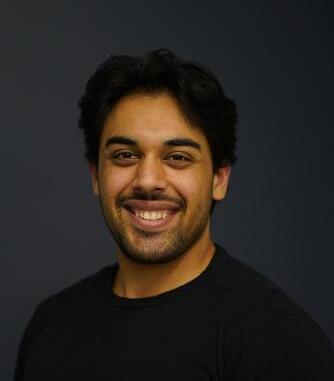
“This is something you are not going to find at any other institution,” he said. “This puts us as one of the most powerful schools computationally on this side of the country.”
While King is looking forward to using the computer, he understands the need for an application process for community groups.
“It’s fair because it is an expensive technology and the application process might get rid of those that are not interested in it as others,” he said.
But there will also be chances for students to get good use of it.
Arman Siddiqui, a senior computer science major, who has worked and learned from many of the professors involved in this project. Photo courtesy of Arman Siddiqui
learning, at least from our side, is what we’re planning on using it for,” said German.
These opportunities are some that many students of all levels will be able to use and learn
Although business and strategic and corporate communications major Emily Nguyen doesn’t see herself using it all that much.
“I personally wouldn’t use it, but I’d love to see what other business majors do with it,” said the sophomore. “I bet it would make analyzing data a lot easier.”
“I think a lot of students are excited, especially given that undergraduate research is something highly encouraged within Fowler,” said Siddiqui. “So this is potentially something that once up and running anybody from an incoming freshman to an outgoing senior can work with.”
King hopes to be one of those students.
“As a data science major, I work with large datasets and use programs that do not always run that great on a Macbook,” he said. “Using the supercomputer would make these processes much quicker and more efficient.”

But it could be helpful for more than just the engineering school.
“I’m sure that folks in the economics and business school would probably want to use it because they do a lot of forecasting and a lot of simulation on the stock market and things of that nature,” said German.
Siddiqui said that he could also see many projects that require collaboration between students from the Fowler and Schmid colleges.
“Students within different departments can make use of it, whether that’s Schmid and Fowler, or maybe that’s collaboration between the individuals from the School of Film and the game development program within Fowler,” he said.
For screenwriting major Jessica McCrorie, that is an idea filled with possibility.
“It would give students a chance to work with those outside of their major,” said the sophomore. “We get to learn and experience new technology and put it to use in the real world.”
No matter who gets to use it, Siddiqui is enthusiastic about what it could do for Chapman and its surrounding community.
“I’m very, very excited to see this result in something novel and something new to reflect on in the future,” he said.
 Chapman composer Julian Berger inside a recording studio, laying down a vocal track for his music. Photo Courtesy of Julian Berger
Chapman composer Julian Berger inside a recording studio, laying down a vocal track for his music. Photo Courtesy of Julian Berger
What made junior music major Julian Berger ditch years of training as a classical pianist to apply as a composition major, with barely any composing experience? Anime.
“The music in anime shows really moved me, and I realized I wanted to make music like that,” said Berger.
It’s what brought him to Chapman University. Berger’s imagination went wild thinking of the amount of collaborations he could be a part of with film students.
But alas, disappointment crept in. There didn’t seem to be much of a relationship between the music and film programs at Chapman.
But THAT is about to change. The directors of both the film school and the music school recognize the problem and plan to start having closer collaboration between their two divisions.
Stephen Galloway, dean of the Dodge College of Film and Media Arts, said one of the early steps to create a formal relationship with the music program could happen by bringing the students together in a joint class.
“This should be a film composing class that connects our students,” Galloway said. “I need to find out the point person for us to connect with and then get them to really do a joint venture with us.”
Giulio Ongaro, dean of the College of Performing Arts (known as Copa to its students), said complicated logistics have prevented the music program and Dodge from formally collaborating in the past. But it was something he and Galloway have always wanted to do.
“I think we need to sort of get down and do it basically, rather than circle around that topic, and then we don’t need to do all the logistics, we can pass it on to faculty members,” said Ongaro.
Both students and faculty in the two schools agree there has been a lack of communication between them.
Occasionally, students will put up a poster requesting composers for a film, or vise versa, which is why a few students have had success collaborating. However, it hasn’t happened formally.
Music business professor Jeanie Pool has been a long-time advocate for this collaboration. In fact, Pool created the music business minor for the purpose of helping students understand the collaborative process in the entertainment industry. In a music supervision class, Pool teaches students about the logistics of what goes into placing a song in a film.
“If a filmmaker knows early on what those are, they won’t waste time thinking, ‘I’ve got to have the Rolling Stones in my film,’ they’ll know from the very beginning that they can’t have the Rolling Stones,” said Pool.
According to Pool, Dodge students could benefit from opening up a line of communication with the music school, knowing that they won’t run into copyright issues. Because there are limitations to licensing a song for a film, Pool recommends film students collaborate with the talent at Chapman.
Berger, a student of Pool’s, said, “Filmmakers need us, and there are a lot more of them than there are composers. But a lot of times

they will use royalty-free stuff or have an amateur friend do it, mainly because they aren’t even aware that we are here to service them, not to mention for free.”
Ongaro suggested that gathering both film and music students together to discuss their ideas with both himself and Galloway would be beneficial.
“We need to find sort of a format that will work. I have something in mind, but I’m not tied to anything in particular. And I think it could work really well,” Ongaro said.
Amelia Anbild, a senior screenwriting major at Dodge, has had no problem immersing herself in both music and film during her time at Chapman. But she did it on her own.
Anbild joined an acapella group at school where she met friends and collaborators that have helped her with film project requirements.
“The two biggest pools that we have in our acapella group right now are Copa and Dodge,” Anbild said.
But for those who don’t have the time or interest in joining an outside group, their path to finding these opportunities is not so easy.
Garrett Cook, a junior film production major, said he is more involved in the onset production of making the film which has not given him much experience working with composers.
Blue, however, sees the path forward as a simple one. Both Dodge and Copa could join forces to create an easy collaborative process.
The film students are already familiar with working alongside a crew. Blue suggests that
all it could take is for the student director to include a music student on the crew.
“The director usually starts by pairing up with a producer and a cinematographer,” said Blue, “and then they start grabbing the rest of the crew from that, and all of us are the students that go here.”
Wait…we still have one more problem.
“From my experience of directors I’ve worked with here, I know they very much go to YouTube for uncopyrighted music because it’s free,” said Blue.
As expected, this caused frustration among the composers.
“Usually, us composers just get gigs through recommendations and knowing some people in Dodge through our own networking,” Berger said.
So what does all of this mean? Will the music and film departments finally join forces?
Galloway is eager to take the next step. “Music is fundamental to film. It could change everything and I would happily create a joint class,” said Galloway.

Likewise, Ongaro believes it’s time to finally take action.
“Sometimes you just have to bite the bullet and do something,” said Ongaro.
More Chapman students are gambling than you think and sports gambling is the bet of choice.

Bookies, proxy bettors, and Virtual Private Networks, the legalization of online sport betting in other states has led to a boom in illegal gambling. In an informal poll of 917 Chapman students, more than 30 percent of them said they had bet on sports.
Including a 20 year old Chapman business student, who has chosen to remain anonymous who says, nearly half of his friends have bet on sports at one time or another. But was quick to add:
“None of us have made money.”
More than 24 states have legalized online sports betting, opening the
Texas holdem poker game being played by Chapman Students.floodgates to a billion dollar vice industry in which many of its addicts attempt suicide.
Online sportsbook apps spent more than $1.8 billion in advertising in 2022 alone. These ads
aired in every state leading to more people looking for ways to workaround the location restrictions. These loopholes result in illegal underaged gambling.
A Chapman sophomore said he was first introduced to gambling at the age of 13 when sites allowed users to gamble with video game items, but he did not start to gamble on his own until a friend of his allowed him to place bets on his account.

They most often do this by using an app BOVADA which allows you to bet on anything from the NFL to sports video games and everything in between.
Unlike the larger apps, it does not limit him by location and does not need any workarounds. BOVADA users buy in with crypto currency instead of direct USD limiting its responsibility to US laws.
A further work around is a VPN, typically VPNs are used for privacy, but they also have the added function of changing a user’s location virtually, allowing them to work around limits.
by Will BarronHowever, larger companies like FanDuel and DraftKings have technologies that prevent this, but because they also have more fair odds it is not uncommon for someone to use a proxy bettor.
These proxy bettors live in states with legal betting and people will have others place bets for them.
This style of betting is also prohibited by the apps with FanDuel’s website stating “Customers are prohibited from wagering on behalf of a third party.” But this is not an easy thing to catch.

This introduction and exposure to gambling leads to a “increase in gambling intentions, behaviors, and problems,” according to a literature review done by Professor of Behavior Modification at Complutense University of Madrid Francisco Javier Labrador
According to the Villanova University’s website on problem gambling “6% of college students have a serious gambling problem.” Which could lead to things as serious as suicide it is time as important as a society to recognize the harms that come with increased gambling accessibility.
Bovada’s deposits page notably leaves off direct USD deposits, crypto-currencies are often used as a way to work around of state laws. Photo from BOVADA APP

Another Chapman sophomore says that he is aware of the issues with addictions, and does his best to see problems. But he adds that he can’t know the entirety of everyone’s situation.
Michelle Malkin, an East Carolina University criminal justice professor, doesn’t think the responsibility can be left to peers. “The problem is that most young people wouldn’t know what the signs are to say that they have a problem with gambling because all their friends are doing it, too.”
One push for federal legalization of online gambling comes from attorney and Chapman Law School graduate (‘14) Dallis Warshaw. In a recent paper on the subject in the Chapman Law Review, she states that the tax benefits could go a long way toward shoring up any dangers to Social Security or Medicare.
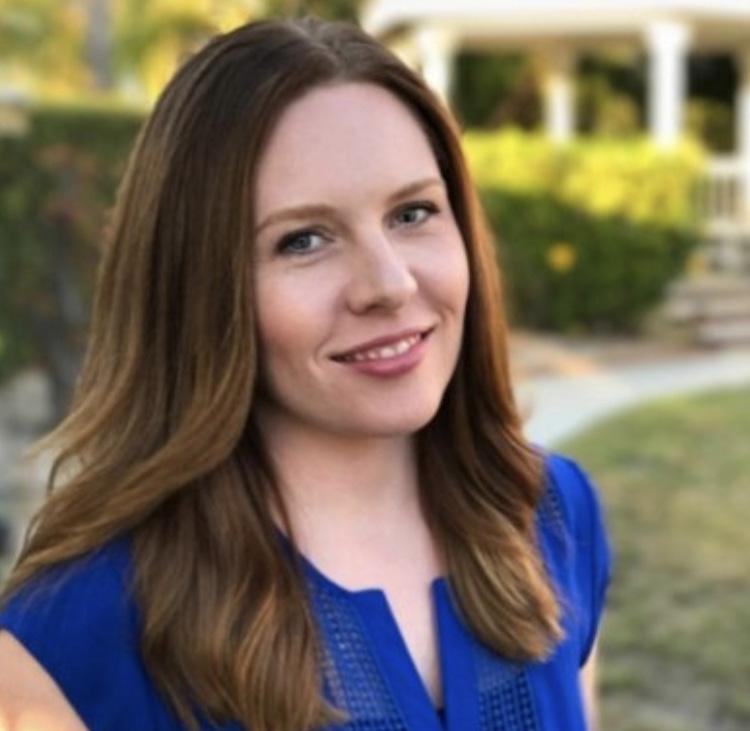
She noted: “Prohibition of online gambling goes against the will of the American people, with over 80% of respondents reporting they are against the current bans.”
 Chapman Law School graduate Dallis Warshaw. Photo from Chapman.com
Chapman Law School graduate Dallis Warshaw. Photo from Chapman.com
Large portraits of Chapman students line the hallway to the Cross-Cultural Center in Argyros Forum. Phrases like, I am Mexican, I am Ukrainian, and I am a first generation college student, are written on its plaques. But the last three words read the same: I am Chapman.
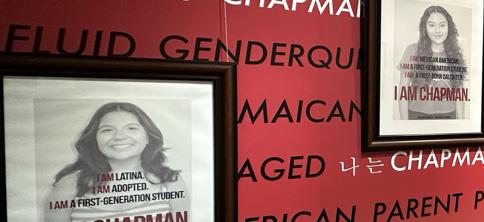
There’s a reason why the massive I Am Chapman display identifies so closely with the Cross-Cultural Center. Many of those depicted in the portraits think of it as a big part of home for them.
Jessica Ramirez, a freshman psychology major seen in one of the portraits, is grateful
that the Cross-Cultural Center was able to help her connect with her culture.
“As someone who doesn’t know much about their cultural identity and where I fit in within the Latin American community since I was adopted, the Cross-Cultural Center has been a great resource to help discover people who felt the same way on campus,” she said.
With a strong push from the Black Student Union and other diverse groups on campus, the center was founded six years ago, in great part to give minority groups on campus a place where they could feel at home. While it has meeting rooms for a variety of student
groups, some students head to its open living space just to relax or study.
Students like senior sociology major Jessica Patin.

“Getting to make friends here is super important, I talk with people who come in here regularly, and I would call them my friends,” Patin said.
One drawback to some students: It’s not that easy to find. Tucked away on the third floor of Argyros Forum down a long, narrow hallway, some students who might want to use it don’t even know it exists.
But for regulars, it’s a safe haven on a busy and sometimes overwhelming campus.
“We are open to all students, anyone is more than welcome to come into the space. We welcome students to study, do homework,
socialize, support each other, and advocate for each other,” she said.
The purpose of the Cross-Cultural Center is to bring Chapman students together across the backgrounds of race, religion, ethnicity, gender, sexuality, nationality, and more. It’s a place to make friends, feel accepted, and take a breath and escape the business of campus.

Several students relax and study in the Cross-Cultural Center.
a breath and escape the business of campus.
It is a meeting place for more than 20 clubs (it has four separate meeting rooms) and student groups, and the Center frequently hosts special events and celebrations advertised on its Instagram page.
When students find the Cross-Cultural Center, it often leads to new friendships. Patin said that the Center helped her feel welcomed after a period of isolation and Zoom class during the COVID-19 pandemic.

Layla Dessouki, a double major in peace studies and strategic and corporate communication, felt the same way. She is an active member of the Muslim Student Association and Students for Justice in Palestine.
“There are definitely a lot of people that I met
that I probably would not have met, a lot of the first generation students especially,” she said.
Dessouki also enjoys using the space for a more social brand of studying.
“It is a lot more social here than in the library, so it can be nice to come here and meet people,” she said.
The meeting rooms used to carry the names of specific minority groups that used them the most. But so many diverse groups wanted the space, the rooms are now named hope, perseverance, respect, and resilience (the last in Arabic). These groups include Chapman Feminists, LatinX club, South Asian Student Association, Students for Justice in Palestine, Muslim Student Association, and the Chapman Spoonies. cum quassimus aut am, coris nem que
Photo by Sydney ScottPatin remembered attending an event hosted by the Chapman Feminists, a campus club she is involved with, that she particularly enjoyed.
“We had an art-painting event in the resilience room, and that was the best club meeting I’ve been to because it was so fun and relaxing. Club meetings here are great,” she said.
Dessouki also shared her experience attending club meetings with the Muslim Student Association and Students for Justice in Palestine.
“You’re socializing with these people because you share a common interest with them. Meetings are social, but we will do administrative stuff sometimes” she said.
While diversity and cultural clubs receive priority in the CrossCultural Center, Martinez stressed that the space is not solely reserved for these kinds of clubs or organizations.
“We also have other groups that meet here, like the University Programming board, the Student Government Association, and the Private Student Association,” she said.
The Cross-Cultural Center throws events in conjunction with specific clubs, but it also hosts social events, such as diversity celebrations, celebratory LGBTQ+ guest speaker events, taco Tuesdays, or “Yoga and Yogurt” days.
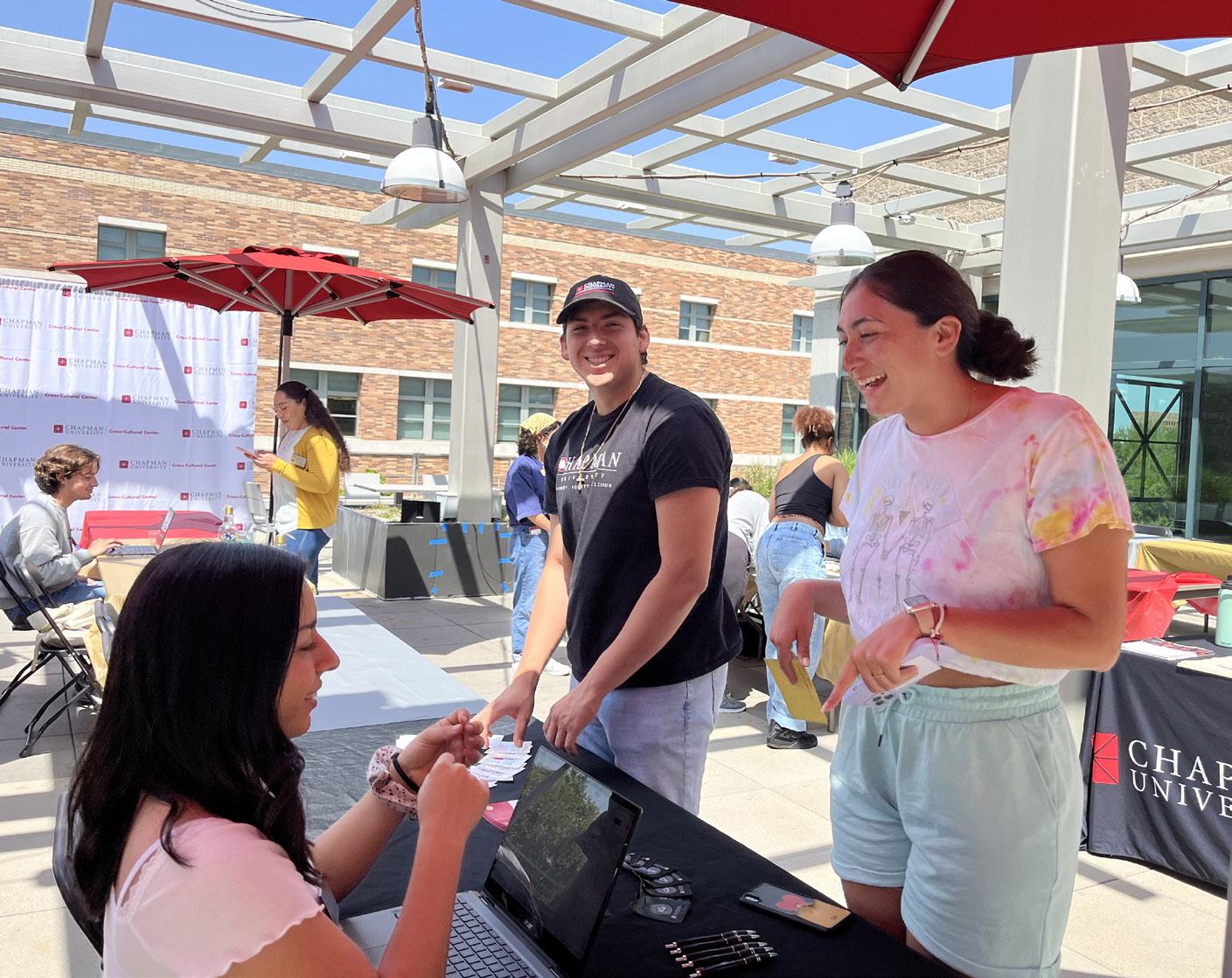
The Black Student Union was a driving force in bringing the Cross-Cultural Center to Campus back in 2017. Then it outgrew the space.
But Isaiah Woods, a senior business finance major and spokesman for the Black Student Union, said it hopes to use the space for future events. Woods is too new to campus to know what his predecessors in Black Student Union had accomplished before him.
“The Cross-Cultural Center is something that I didn’t even know we had until two months ago,” Woods said. “I definitely will be in that Cross-Cultural Center and taking advantage of that opportunity,” he said.
To bring more awareness to the area, Patin constantly meets new students finding the place for the first time.
“Weekly, students will come in and say ‘I didn’t even know this was here, and now I’m going to come back all the time,’” she said.
Dessouki expressed frustration with how the location almost feels hidden away.
“If it were up to me we wouldn’t be up in the corner of Argyros Forum, because no one knows where we are,” she said.
Another reason Chapman students have a hard time finding out about the CrossCultural Center is a lack of advertisement for the space. While the “I Am Chapman” murals hang on multiple parts of campus, and their message reflects the Cross-Cultural Centers
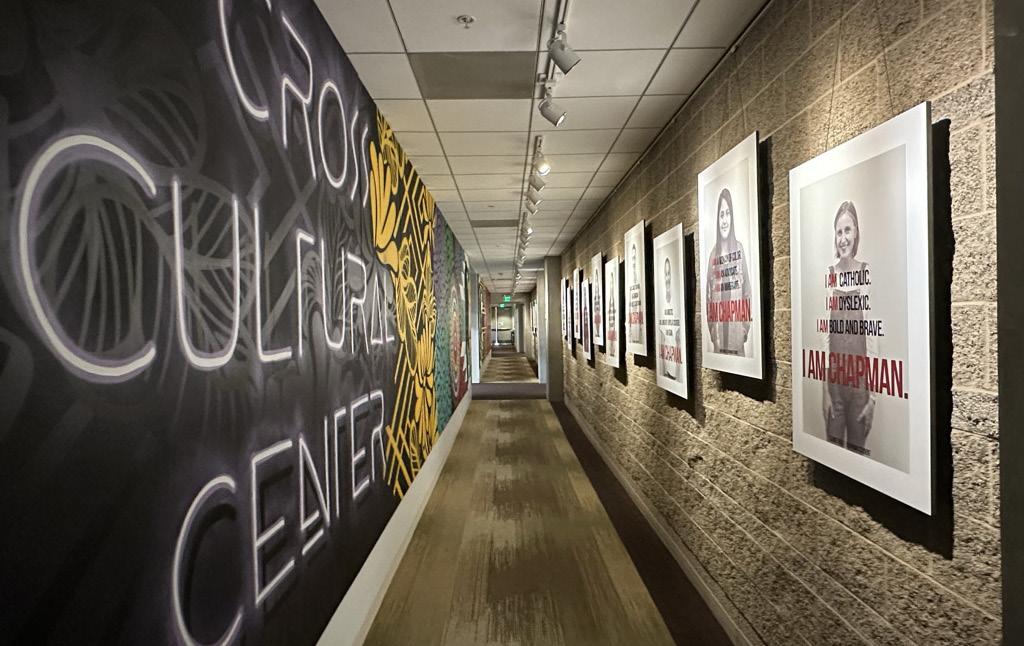 The hallway on the third floor of Argyros Forum leading to the main entrance of the Cross-Cultural Center.
The hallway on the third floor of Argyros Forum leading to the main entrance of the Cross-Cultural Center.
mission, the artwork doesn’t actually make specific mention of the CrossCultural Center. The Cross-Cultural Center’s website has very little information about what actually goes on in the space, making the CrossCultural Center’s Instagram page its main method of self promotion.
Patin also felt that the Center could stand to advertise itself more.
“We get no publicity or anything like that, I think the administration has to promote us more,” she said. “I know Araceli is pushing for more involvement with the student clubs, but I think we should also push for more involvement with the faculty and staff generally.”
Valeria Abarca, a double major in Spanish and Health Sciences, and another student pictured on the ‘I Am Chapman’ mural, is just a freshman. But she’s one of the Cross-Cultural Center’s biggest fans.
“I hang out there basically every day, and I have met so many friends there and been to so many of the events that go on in there. It is such an asset to the school in my opinion,” she said.
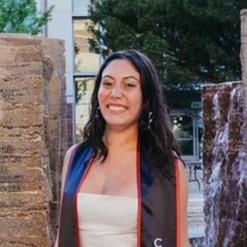
 BY TATUM FOULGER
BY TATUM FOULGER
Students hungry after a full day of classes heap their plates at the dining commons. Then walk away with their plates cleaned. Well, not everyone. In fact, too many still leave their plates half full.
Junior Cara Hunter, treasurer of Mission Environment, a student-run organization on campus, finds it disheartening.
“It is difficult to reckon with the fact that the enormous amount of food waste that will accumulate throughout the year directly results in more greenhouse gas emissions,” Hunter said.
Each week approximately 1850 pounds of food is wasted at the dining commons –that’s nearly a ton.
Each WEEK.
Add to that additional waste generated at on-campus restaurants, from Starbucks to the Student Union eateries.
Some attribute wasteful practices to students choosing the quickest option instead of the most sustainable.
futures,” said graduate student Kierra Koehn. “Food waste and sustainability take the back burner, and instead, we go for easier options.”
Not all of it is the students’ fault.
According to Chapman’s Sodexo dining website, its first priority is to reduce food waste. However, multiple on-campus restaurants still implement practices that environmentalist students consider wasteful.
At Einstein Bros. Bagels in Argyros Forum, unsold bagels and pastries get tossed out by employees, even though the company has claimed it is committed to limiting food waste.
Bagel Brands, the parent company of Einstein Bros. Bagels, listed food waste as a strategic priority on its environmental, social, and governance progress report late last year.
The dumpsters behind Argyros Forum disagree.
“I do care, and I do think that other college-aged students think it is important as well; however, we are busy trying to handle our lives and figuring out our
Similarly, Starbucks has announced its commitment to the environment and limiting waste. In a message from Chief Executive Officer Laxman Narasimhan in April 2023, five promises were made to the company’s partners.
One of those was: “At our best, we give more than we take (our environmental promise).”
But, the Starbucks on campus still throws away heaps of coffee at closing time.
“I understand that there are some regulatory constraints on Chapman Dining to give away unsold food; however, it is still disappointing to see large sums of perfectly fine food being thrown away,” Hunter said.
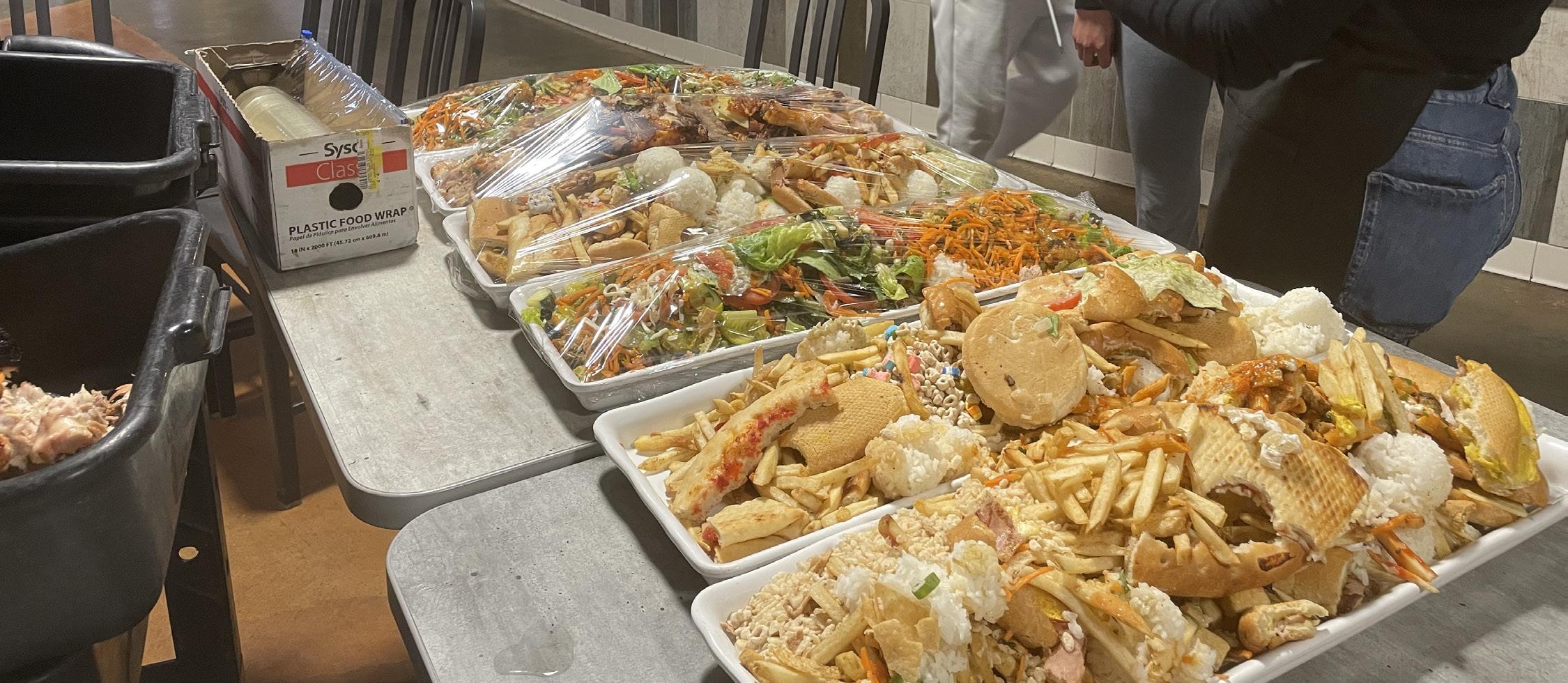
She added: “I hope that in the coming years, the Office of Sustainability can work alongside Chapman Dining to organize events to distribute unsold food to community members in need.”
Randall Dining Commons staff have found a way to bring awareness to food waste without going against Chapman’s policies.
Rodney Reed, resident district manager, believes the biggest challenge when it comes to food waste at the cafeteria is when students take more food than they plan on eating.
To help bring light to the issue, the staff organizes “weigh the waste” events in partnership with the Office of Sustainability each semester.
He added: “It definitely helps to raise awareness and we do see an impact on behaviors as a result.”
“It is a great way for students to visualize the amount of food they are throwing away and has been well received.”
- Rodney Reed, resident district manager
Although staff claims the event has been successful, data from the Office of Sustainability counters that point.
In April of 2022, 92 pounds of waste was recorded in a single lunch period. Just five months later, it was nearly triple that amount.
“It’s misleading. They need to admit there is a problem in order to do something about it,” said Chapman alum McKenna Foulger (‘20). “They definitely have the responsibility to be honest.”
So, are students really being impacted by these events, or are they indifferent?
Foulger said the events never had an effect on her consumption behaviors at the dining commons.

“The only time I wasted food was when I tried new things and hated it,” she said.
“I never saw the benefit of such a passive approach because students could so easily ignore it. There were no consequences for continuing to be wasteful.”
Hunter agrees, pointing out busy schedules as an additional factor.
“It is hard to consider making environmentally conscious choices every single day when grabbing lunch in between classes,” she said.
Student volunteers Lillian Holmberg and Marc Gamayo weigh a tray of vegetables at the dining commons’ weigh the waste event in late April.
Rockie Rosenberg was one of the lucky few. Finding a therapist at Chapman can be a long waiting game. So when Rosenberg scored an appointment after just a few days, she was over the moon.
But that excitement quickly faded when she felt the psychologist she met with wasn’t the right fit. Still, she persisted. Better to have a therapist you don’t love rather than wait months for a new one.
Today, more than ever, students across America are reaching out for help from their university’s mental health services. Chapman University is no different.
However, with its slow but steady increase in population — Chapman just passed 10,000 total students for the first time — paired with rising therapy needs, the Student Psychological Counseling Services is having a hard
time keeping up. Some students have found themselves waiting weeks, or even months, for an opening at the counseling center. And when they finally get their appointments, some feel let down with the services they’re provided.
When you call its main number for an appointment, you are told up front that the wait could be weeks.
According to Dean of Students Jerry Price, the demand for mental health resources is at an all-time high.
“Over the last 10 years, the demand for students seeking counseling appointments has grown at five times the rate of enrollment increases. So it’s not just more people,” he said. “A higher percentage of people want it.”
Just how busy? Too busy to respond to weeks of requests for comment from these reporters.
Then finally told the reporters they didn’t have time to talk about it.
But psychological counseling services are trying to alleviate the high demand. It has partnered with a student volunteer mental health group called Active Minds.
The service’s director Andrew Kami proposed to its co-presidents, graduate student Kierra Koehn and junior Ashley Alexander, that they work together. The two agreed to help as a peer support program.

Alexander believes they can help because students are able to relate to each other in a way traditional therapists cannot.
“Ultimately, we hope to supplement the therapeutic process by allowing students to talk with a peer while they are on the waitlist, so they don’t feel so alone,” the biochemistry and molecular biology major said.

Active Minds members have already begun meeting with students on the waitlist for counseling appointments.
Alexander emphasized the program is not meant to be a replacement for therapy.
While the center has increased its outreach services in recent months, students are still experiencing long wait times for counseling appointments.
In fact, counseling services staff will tell you
matching students to a clinician can take a maximum of three to four weeks. But, junior English major Brian Guevara knows that is not always the case… not even close.
After experiencing what he referred to as a “traumatic incident,” Guevara sought help from the counseling center, but lost hope as time went by.
“It’s been about a year since I’ve gone in to ask.”
–Brian Guervara
“I went through the Dean of Students office, and they reached out for me and again, I never got a response from them.”
Guevara added: “It feels like they don’t exist at this point.”
Rosenberg’s assigned therapist told her she wasn’t qualified for the issues Rosenberg was dealing with.
But, it’s not all bad news. While some students have a hard time scheduling an appointment with a clinician, others have had a better experience.
Sophomore communications major Amanda Dornsife was initially matched with a clinician she felt wasn’t able to empathize with her, but was quickly matched with a new one.
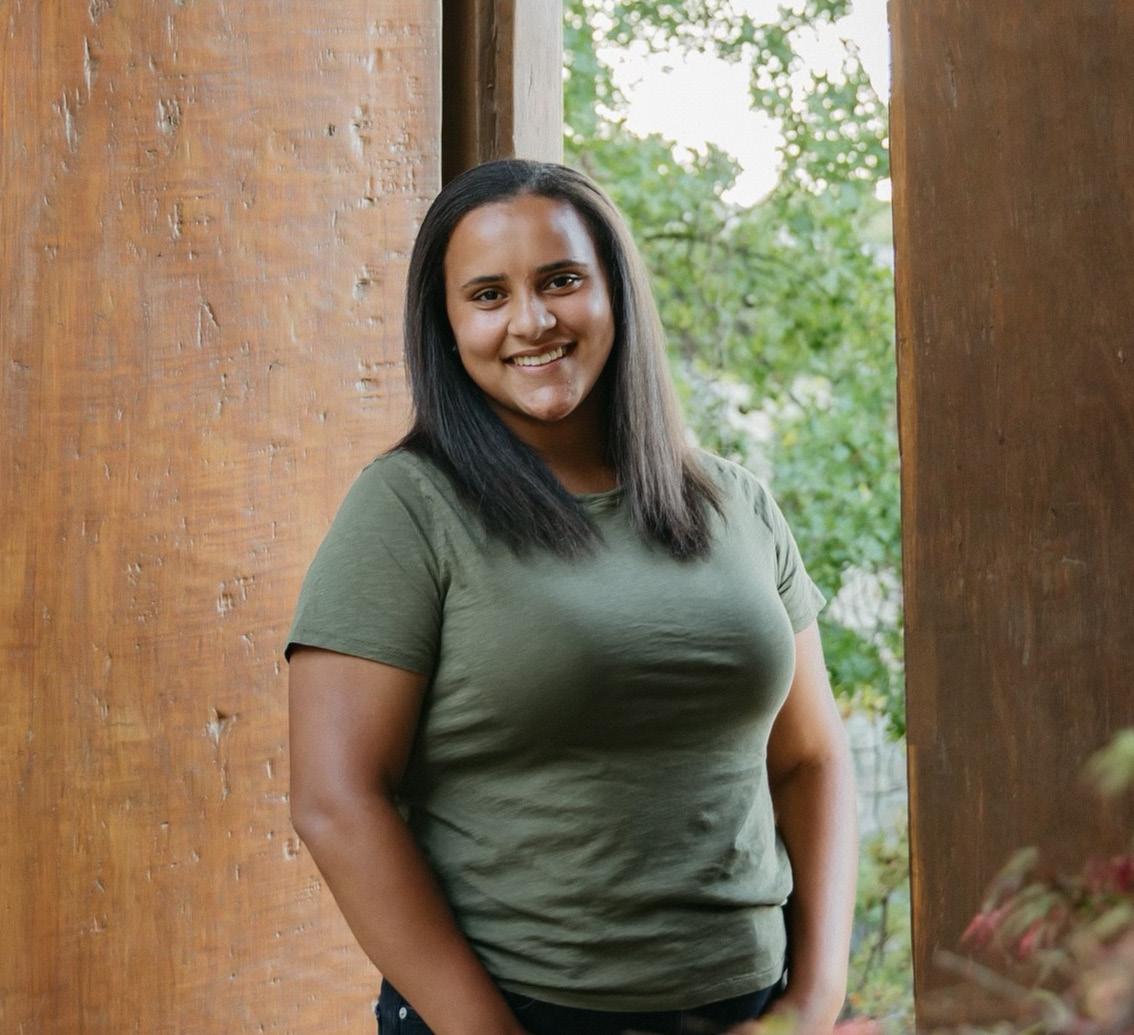

“My current therapist is the best therapist I’ve ever had. She listens to me and she also validates me,” Dornsife said. “I absolutely love her.”
Student Government Association president Rachel Berns believes mental health should always be at the forefront of an institution’s efforts.
“It is challenging to learn of instances where students did not receive the timely support, or any support, that they were seeking,” Berns said.
She added: “I highly encourage students to continue voicing any challenges they’ve faced with accessing counseling services with higher administration.”
“Why would I be paired with her in the first place when I took the time to fill out a survey and email about everything that was going on?” Rosenberg said. “It felt like a waste.”
Will you get an appointment within days, or will seeking help be a lost cause? Take that first step and find out. You can reach student psychological services by email at spcs@chapman.edu or by phone at +1 (714) 997-6778.

SPRING 2023
VOL. II
